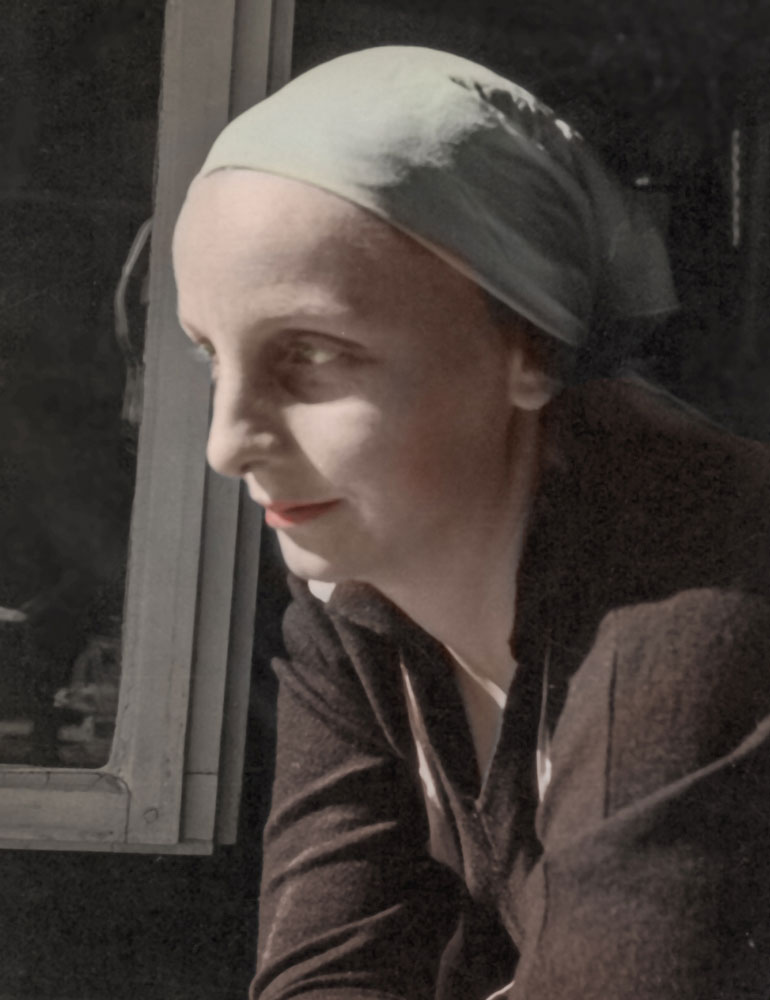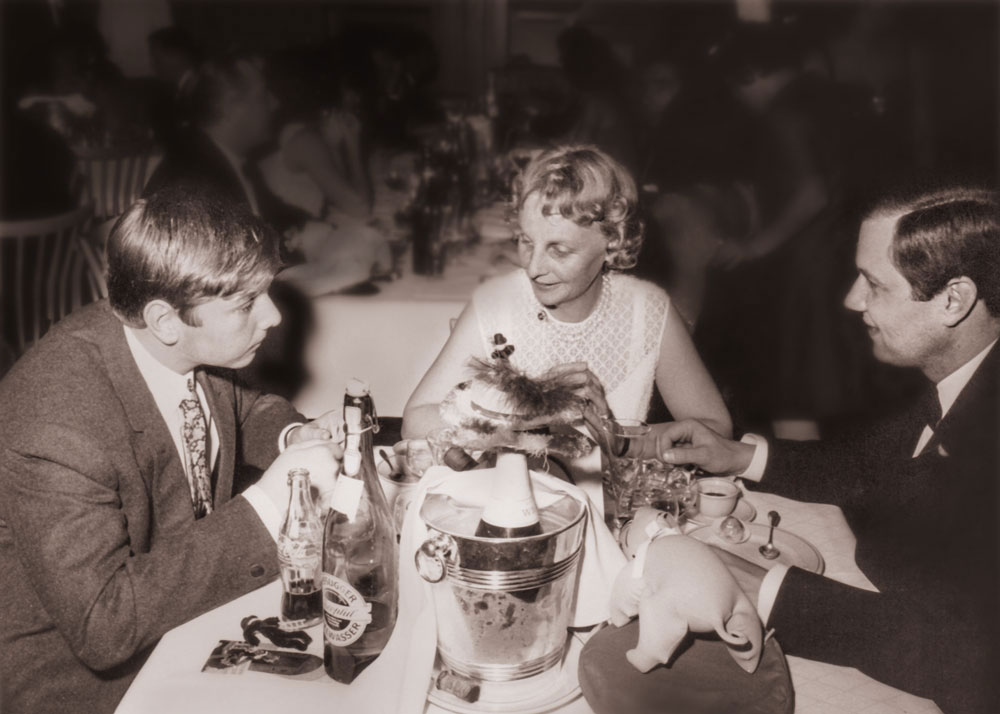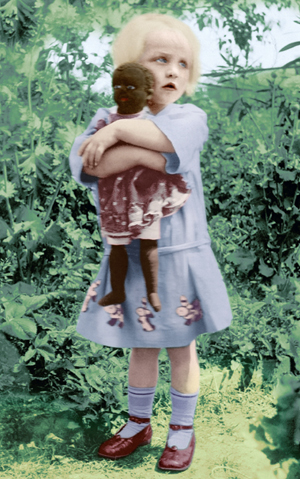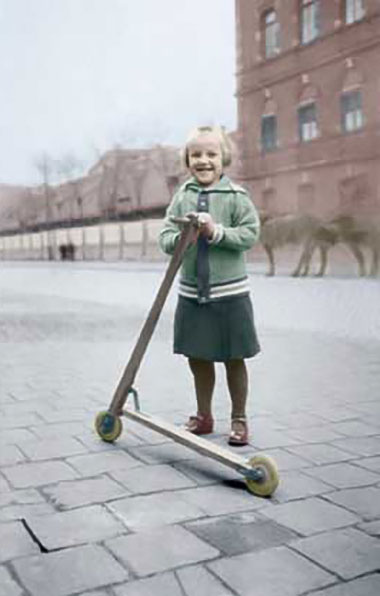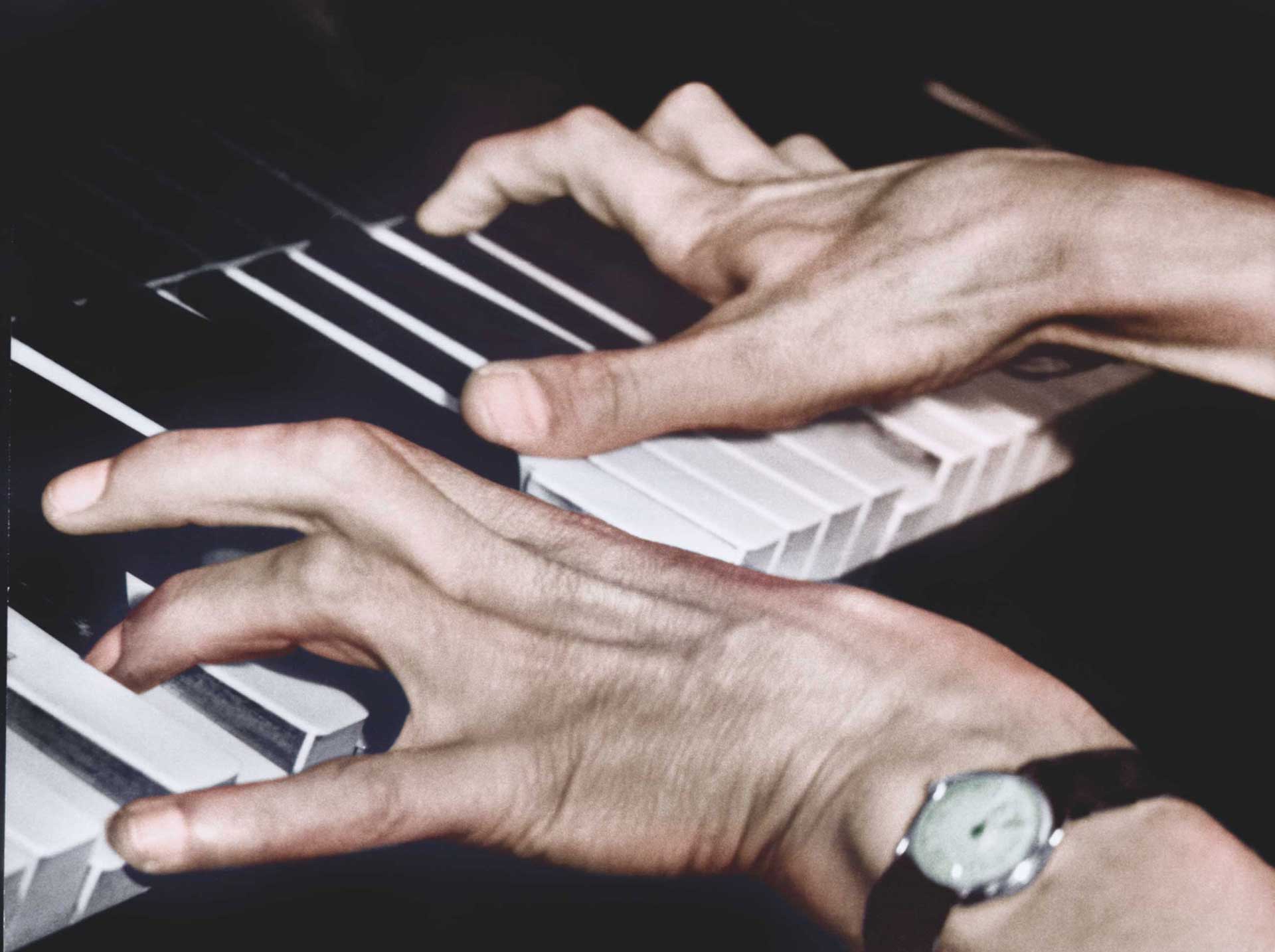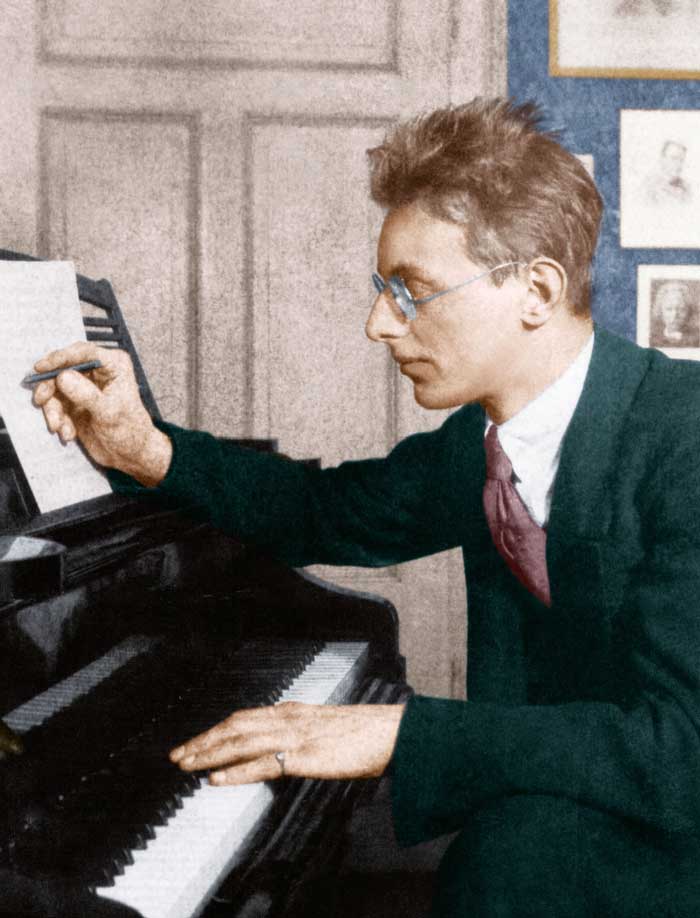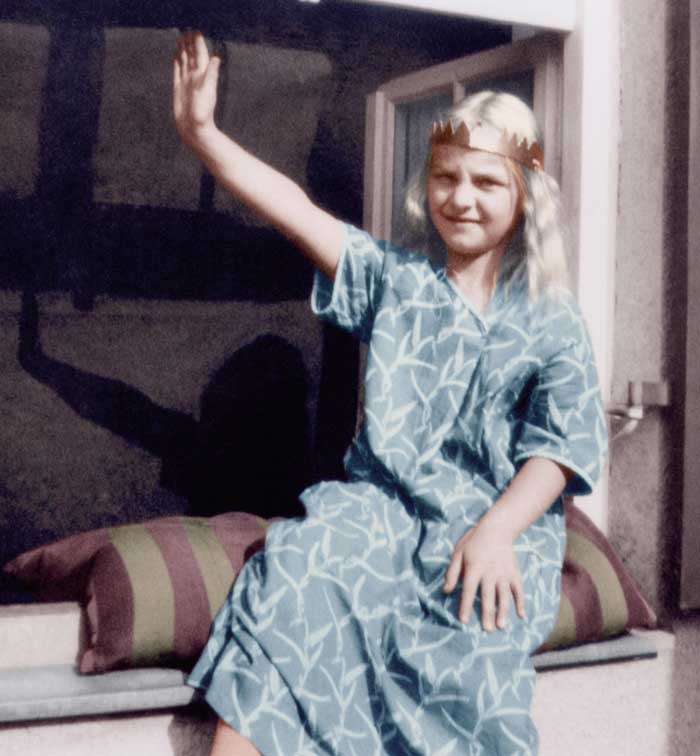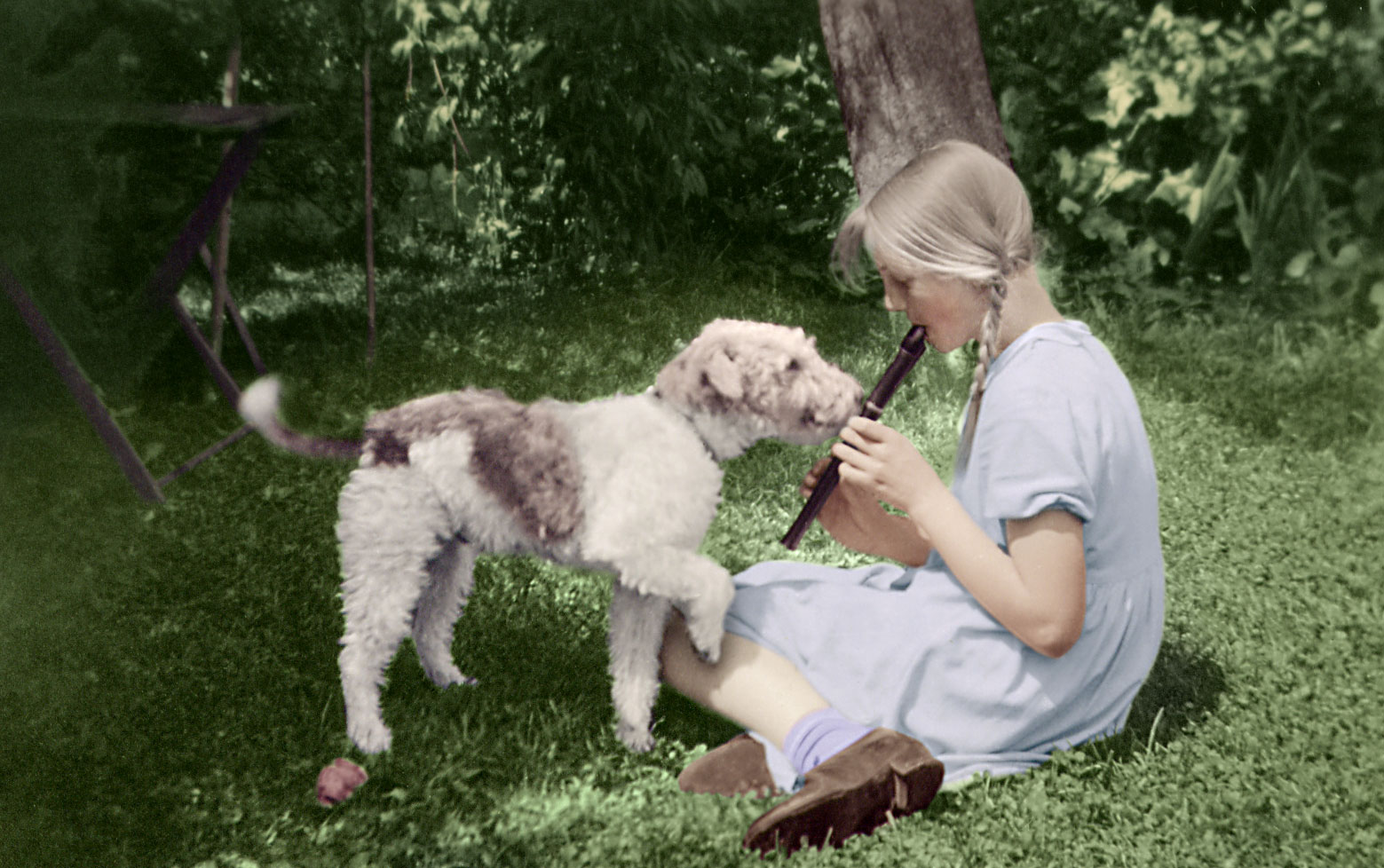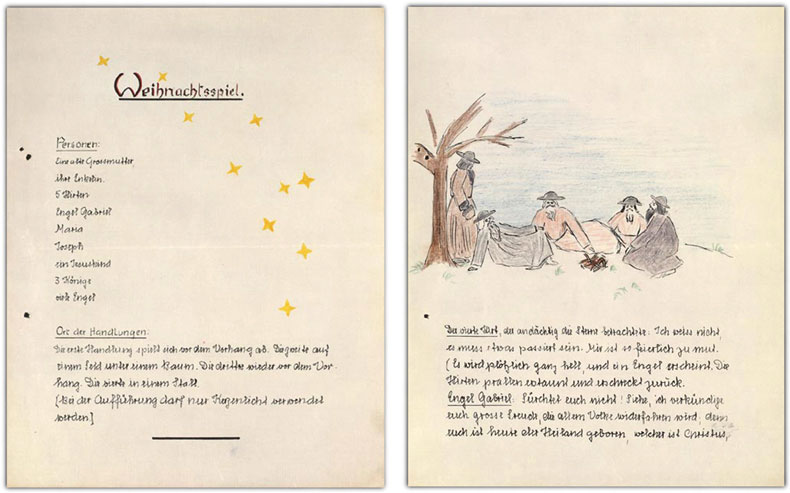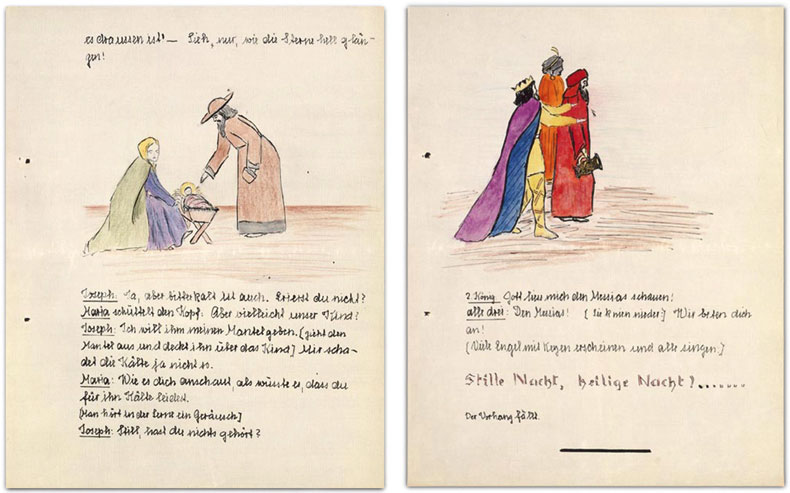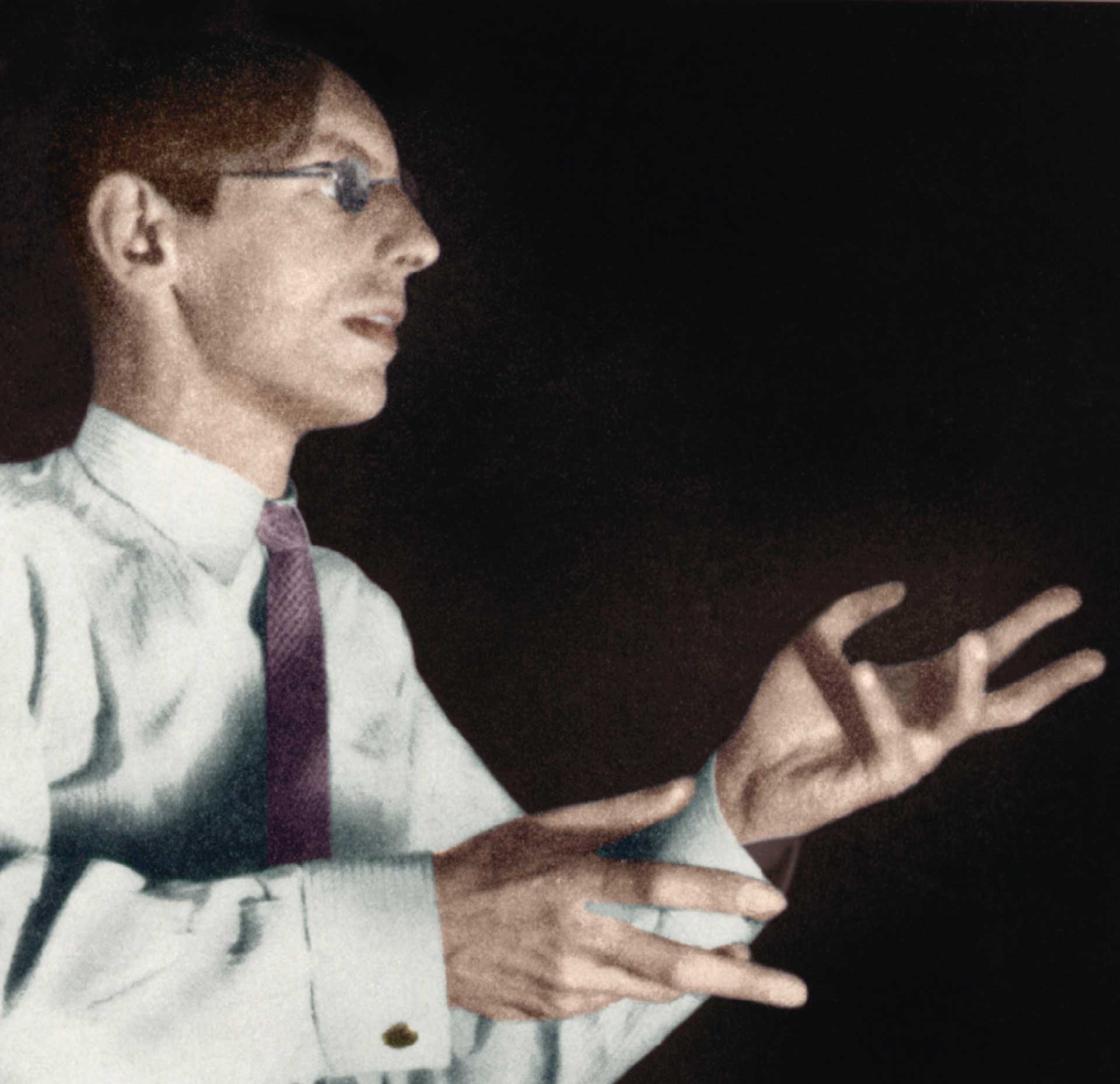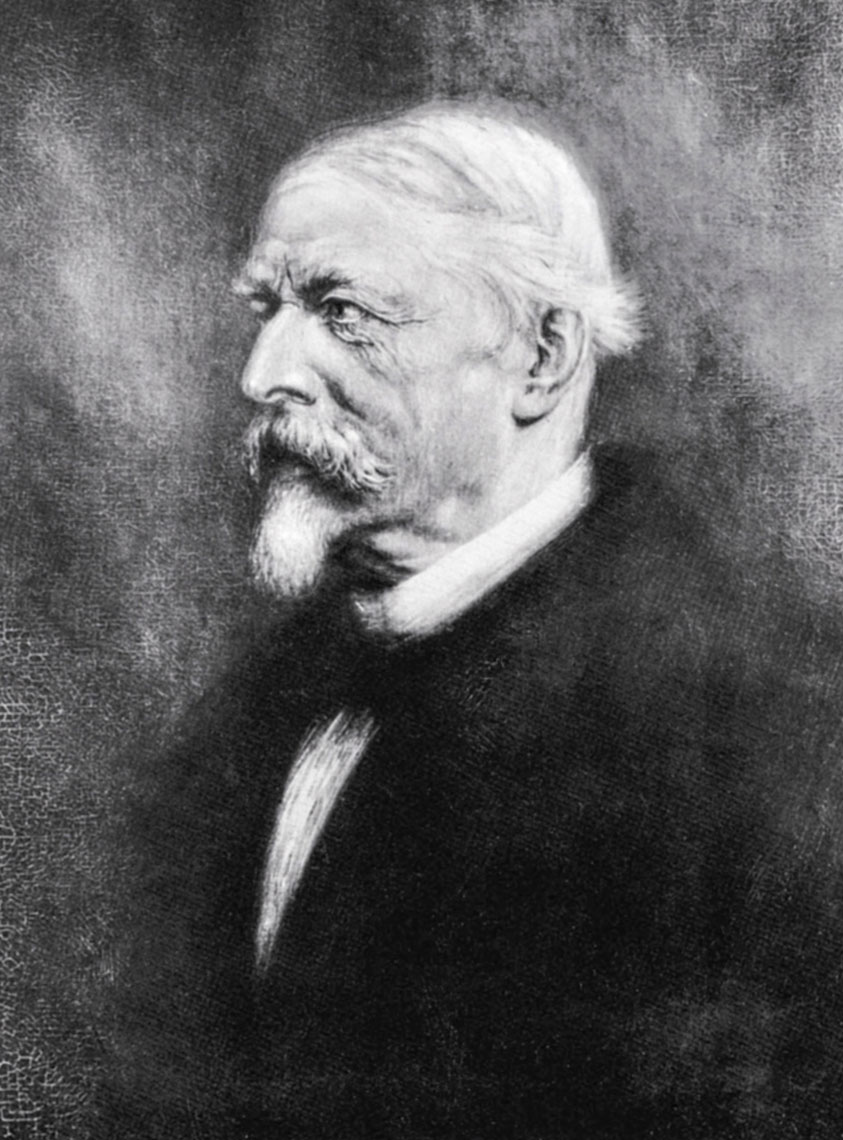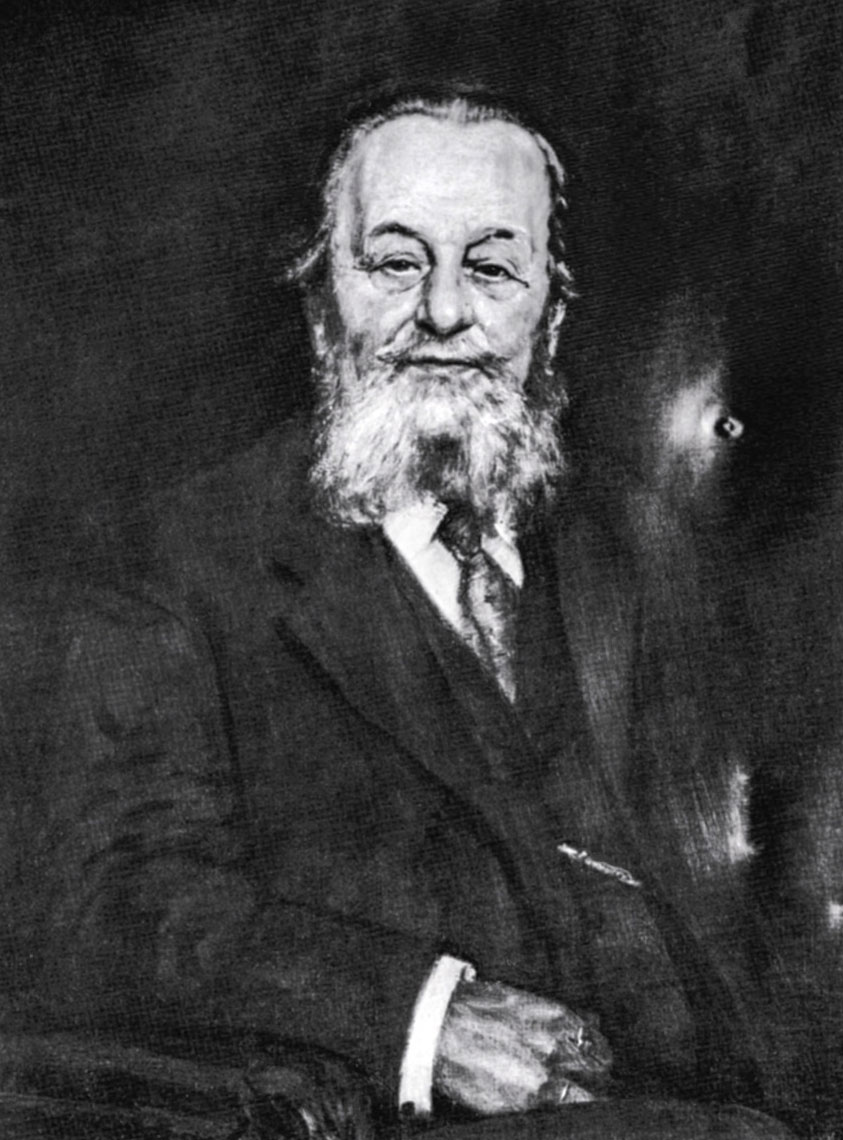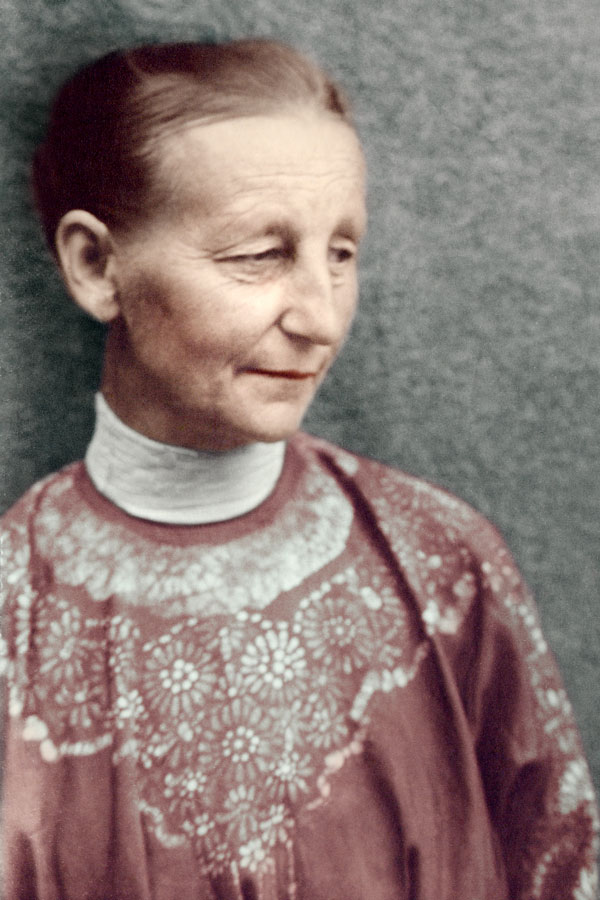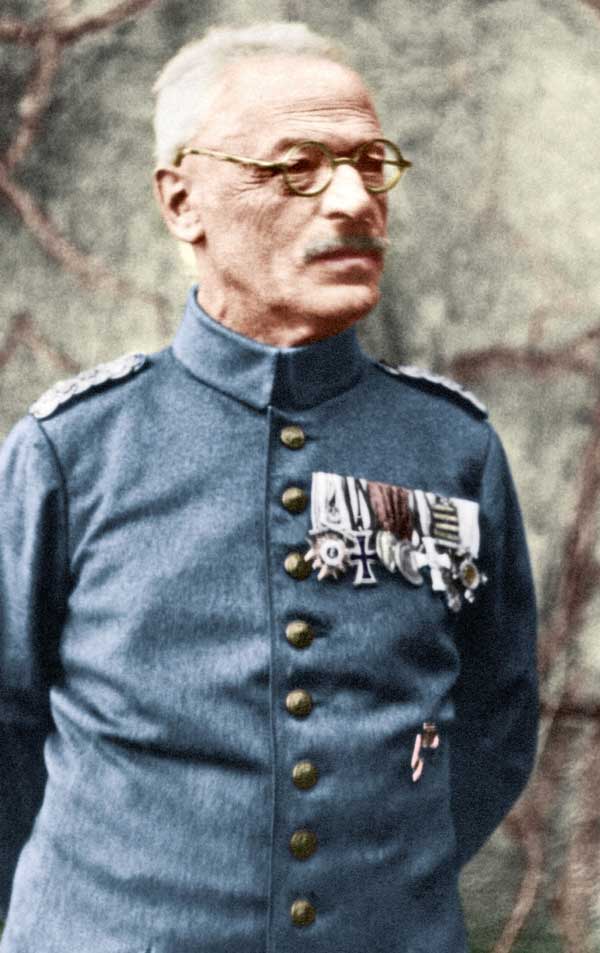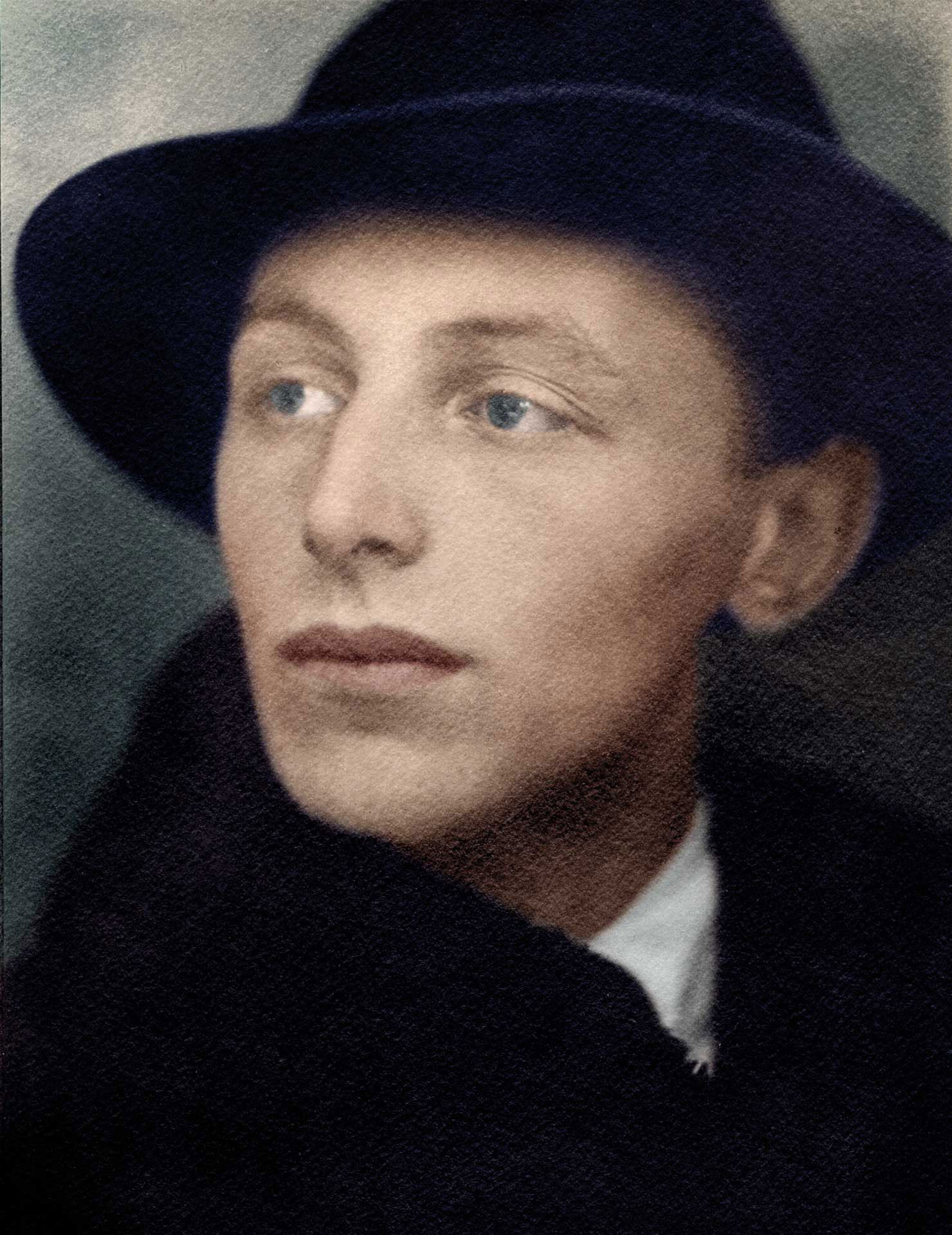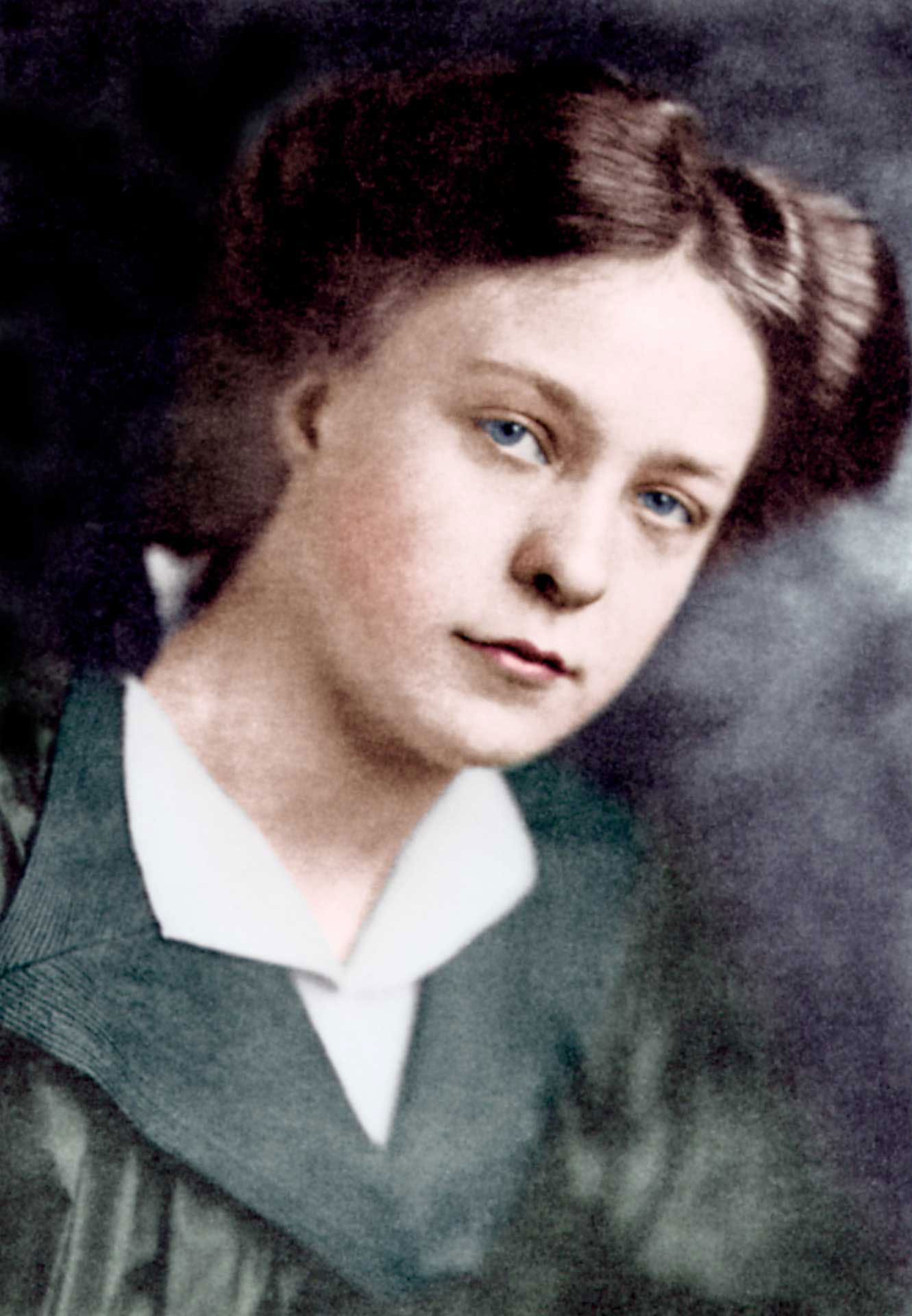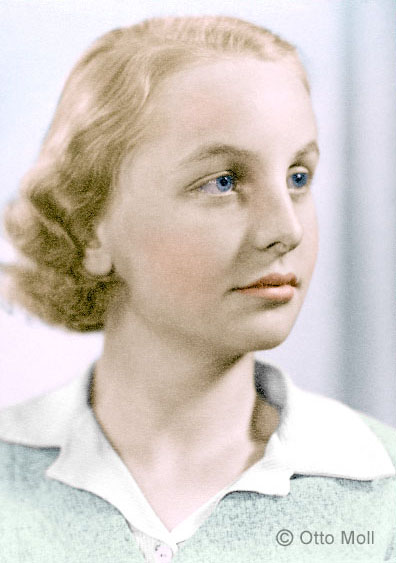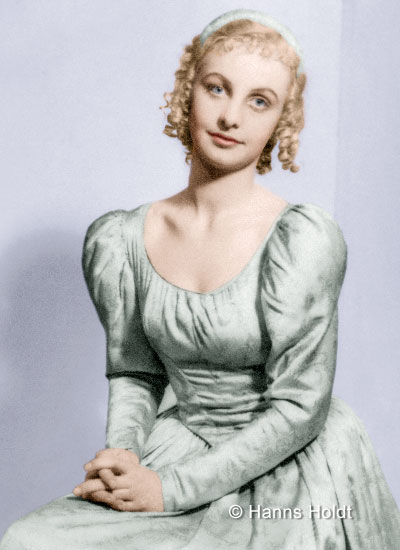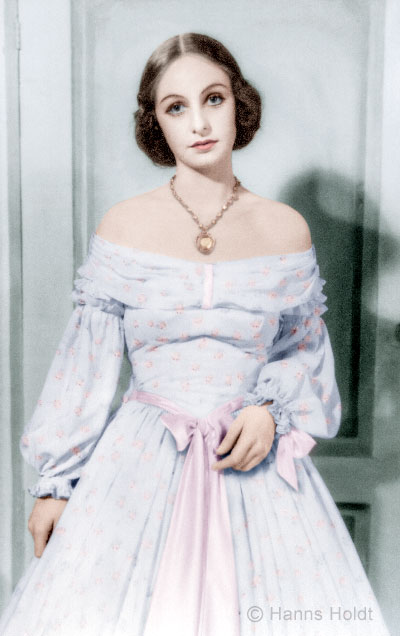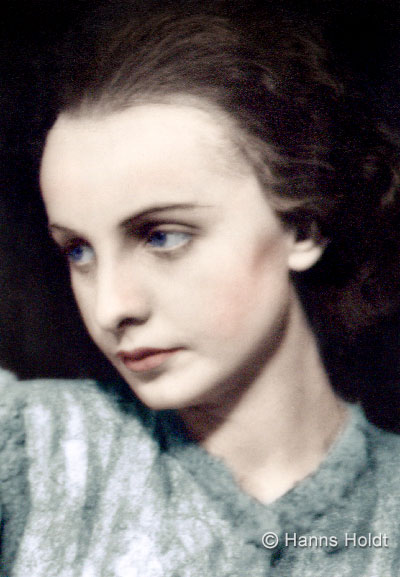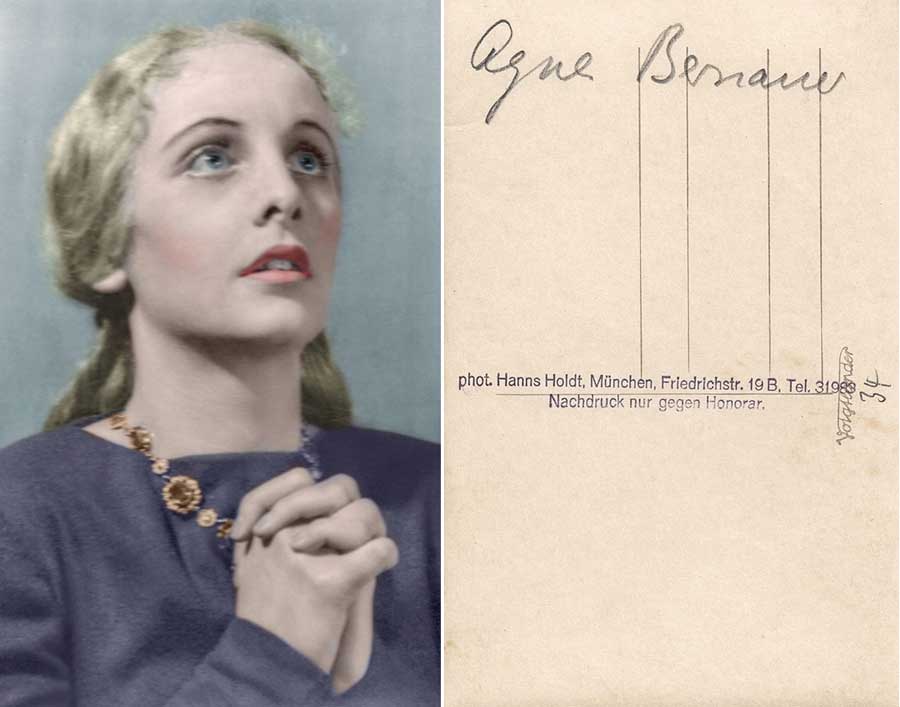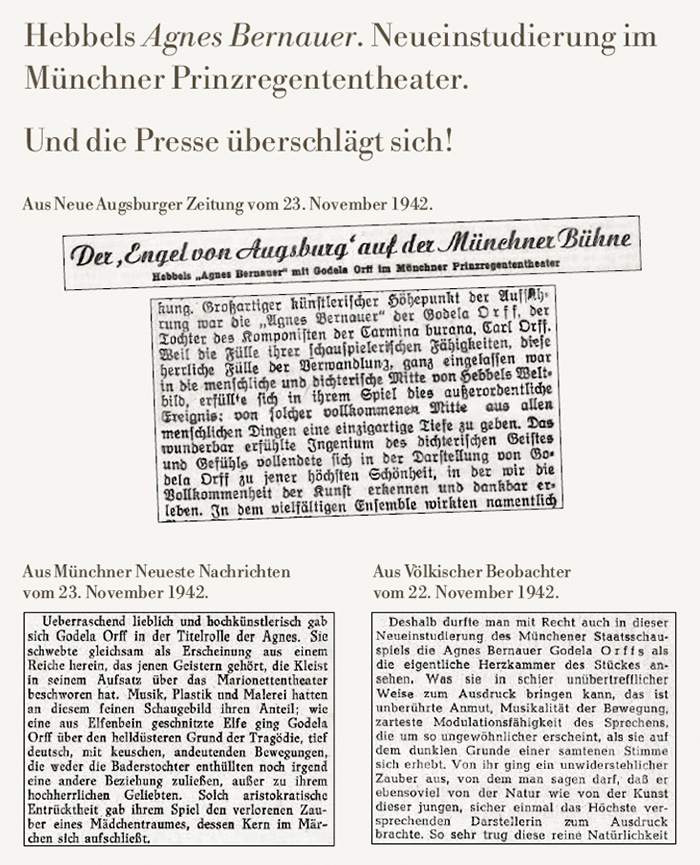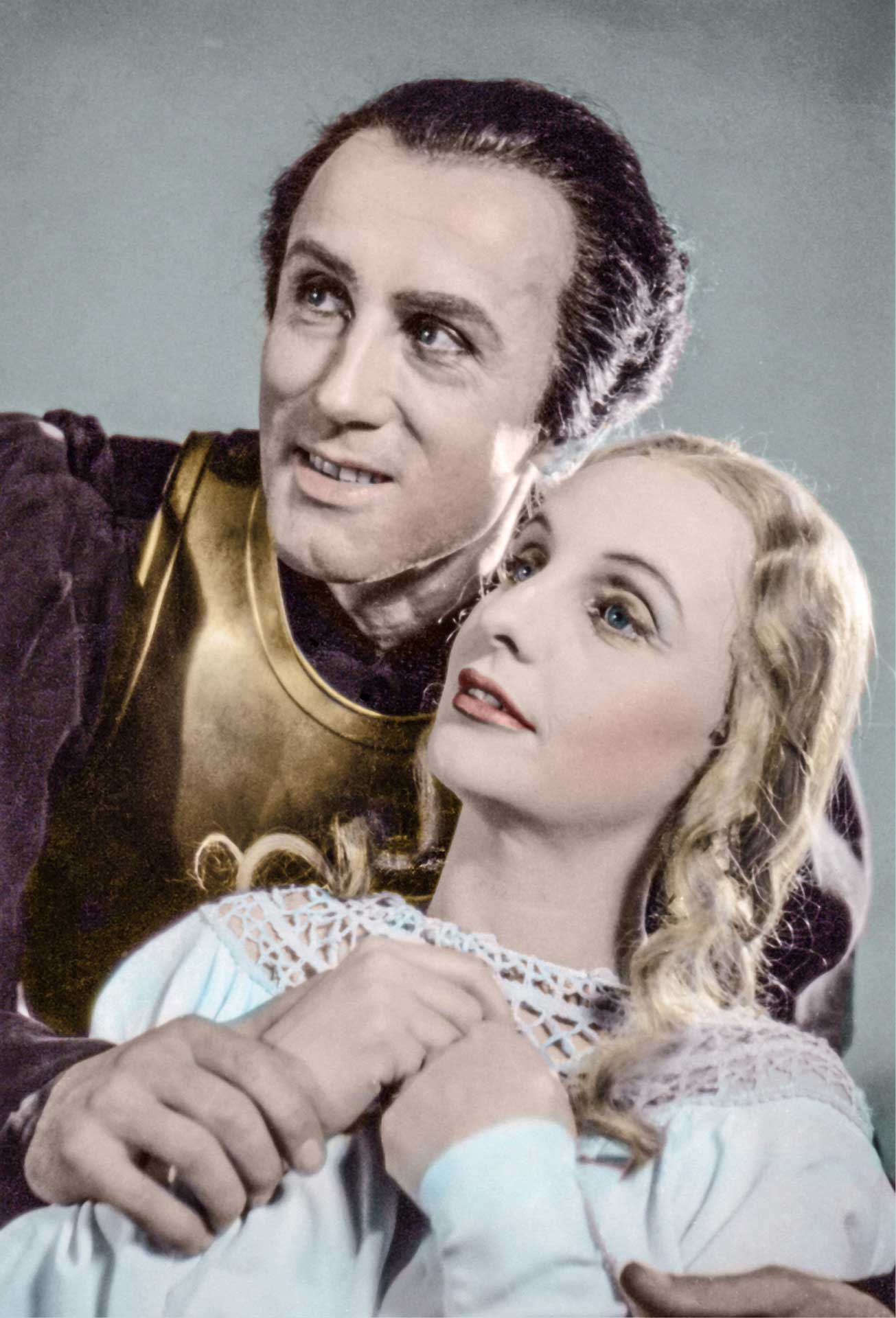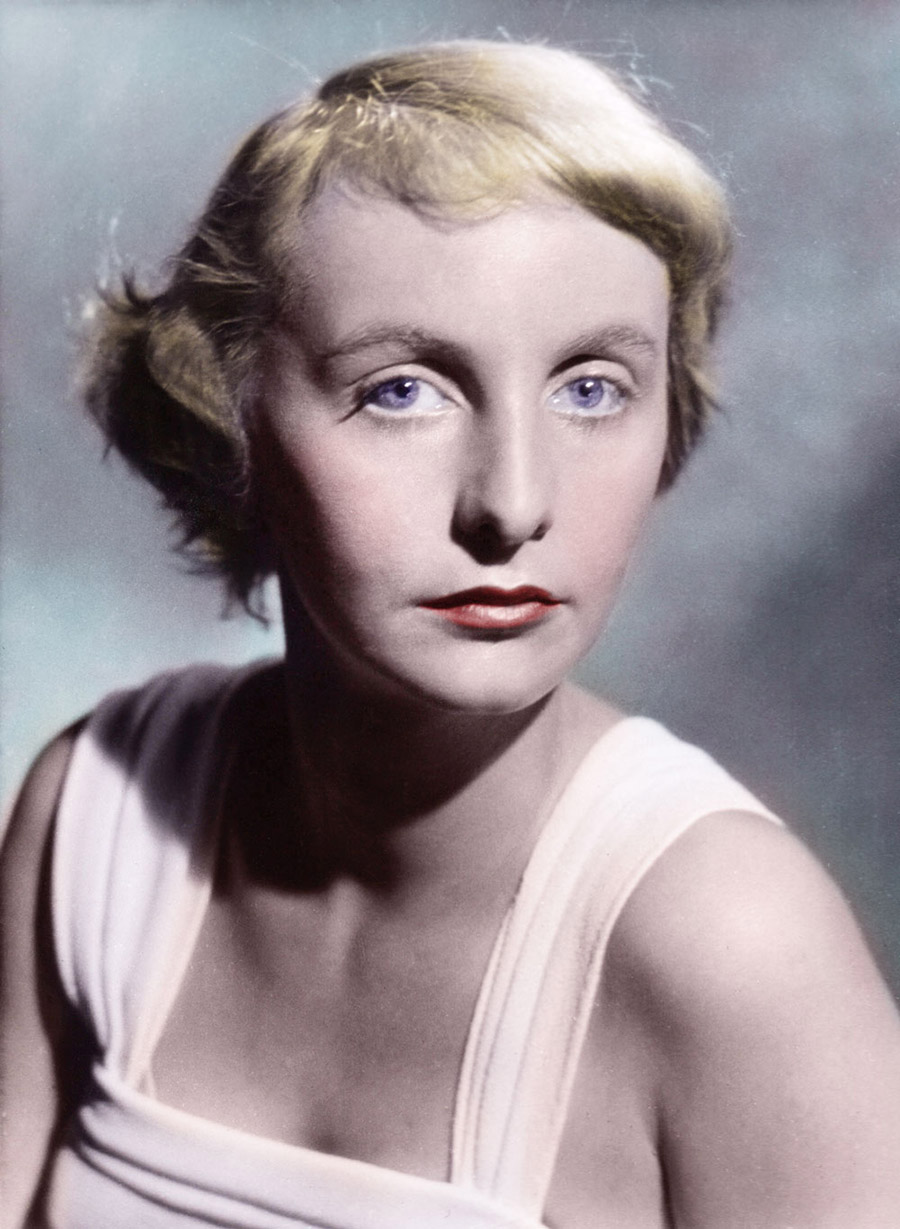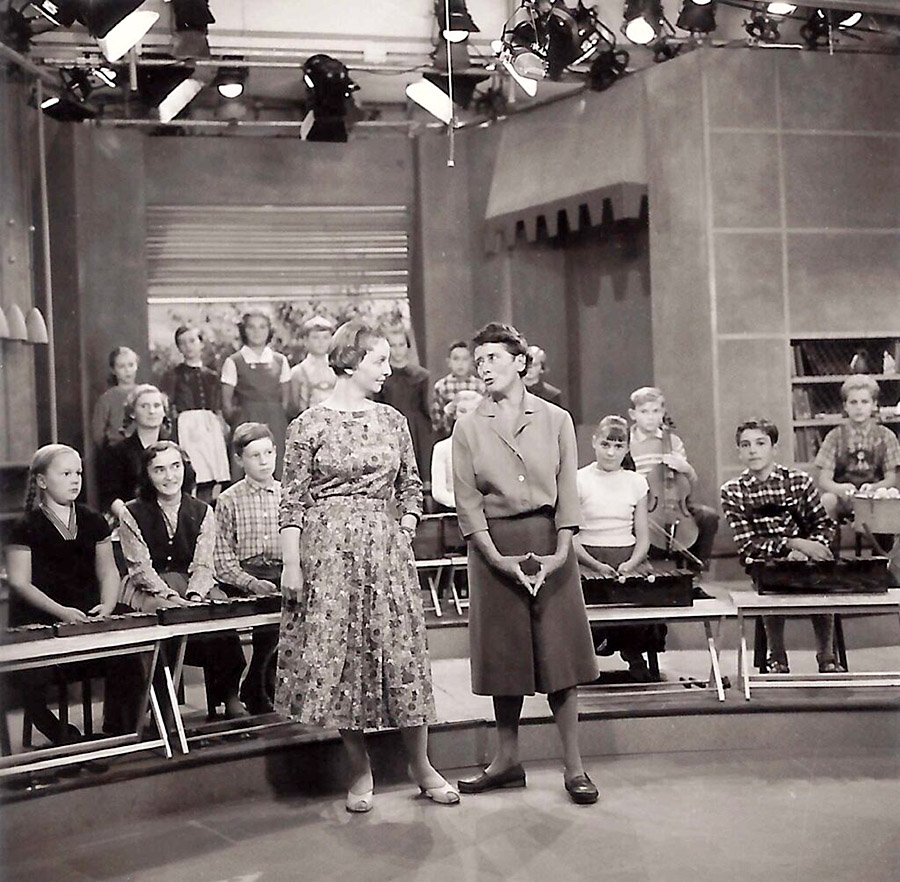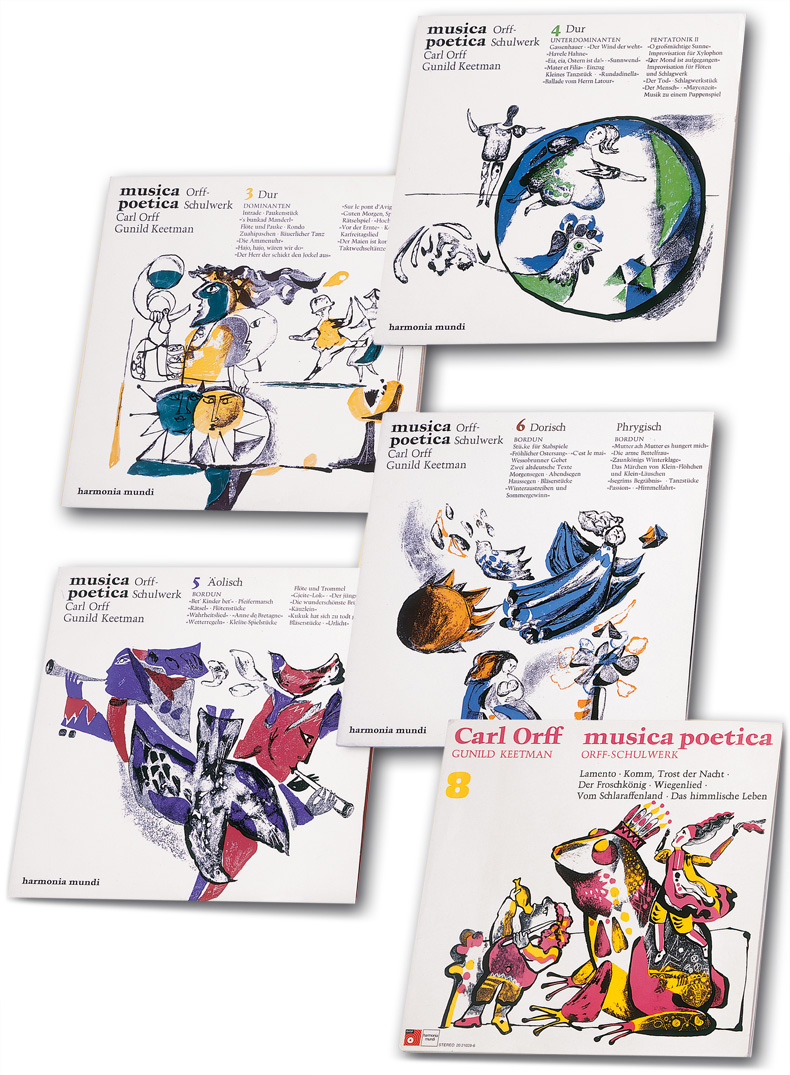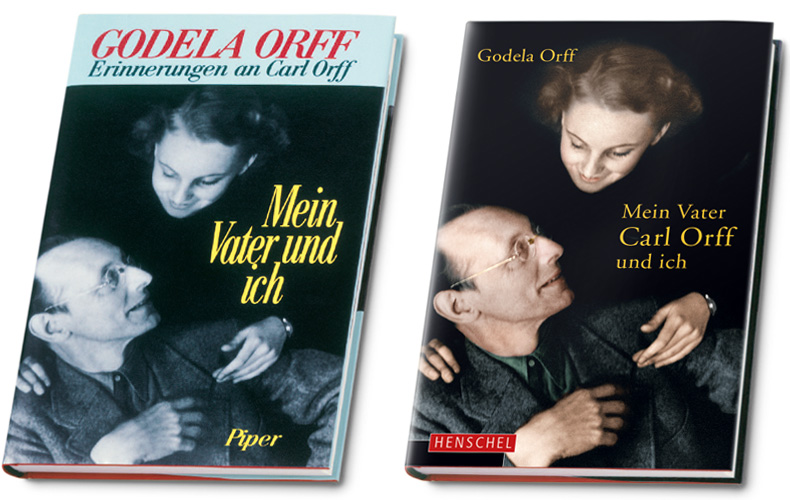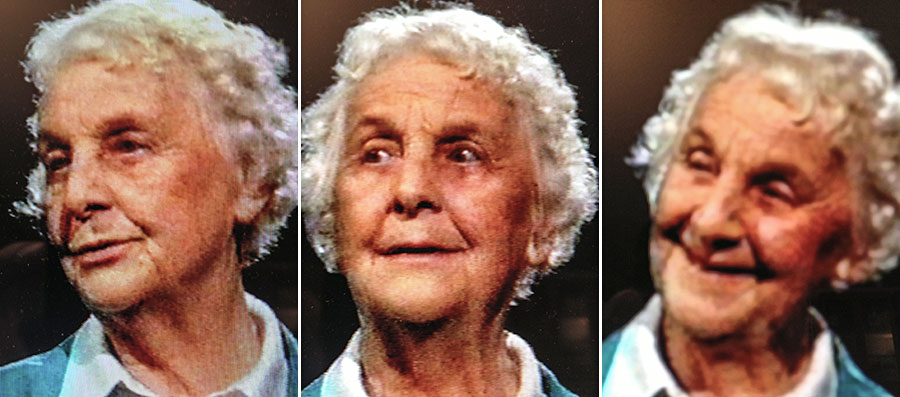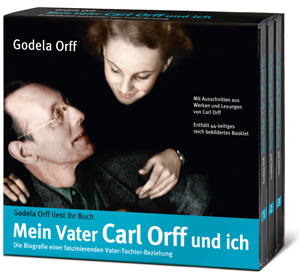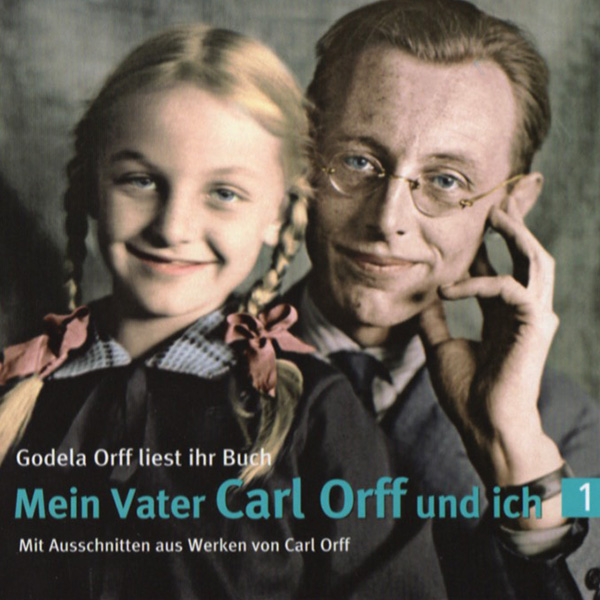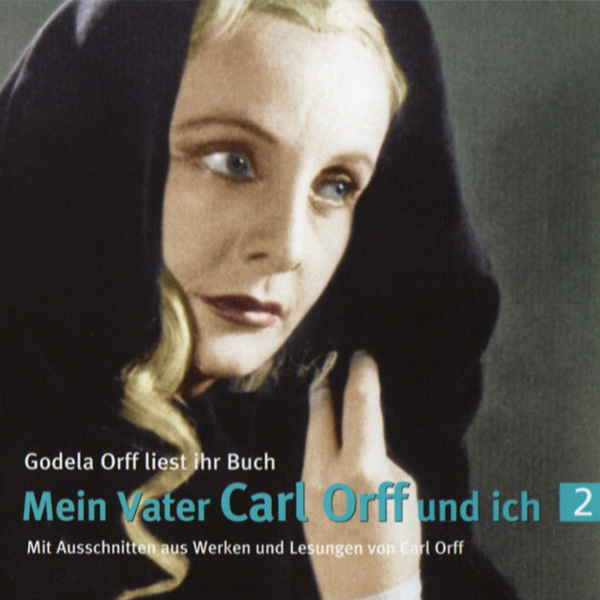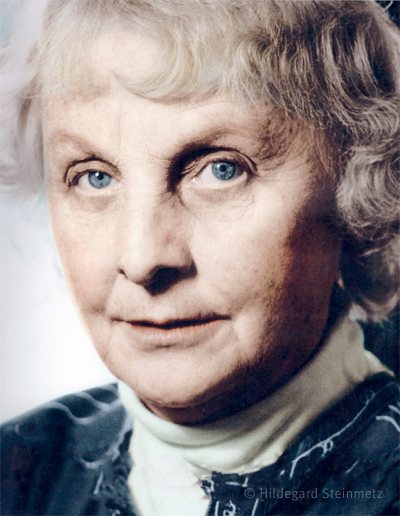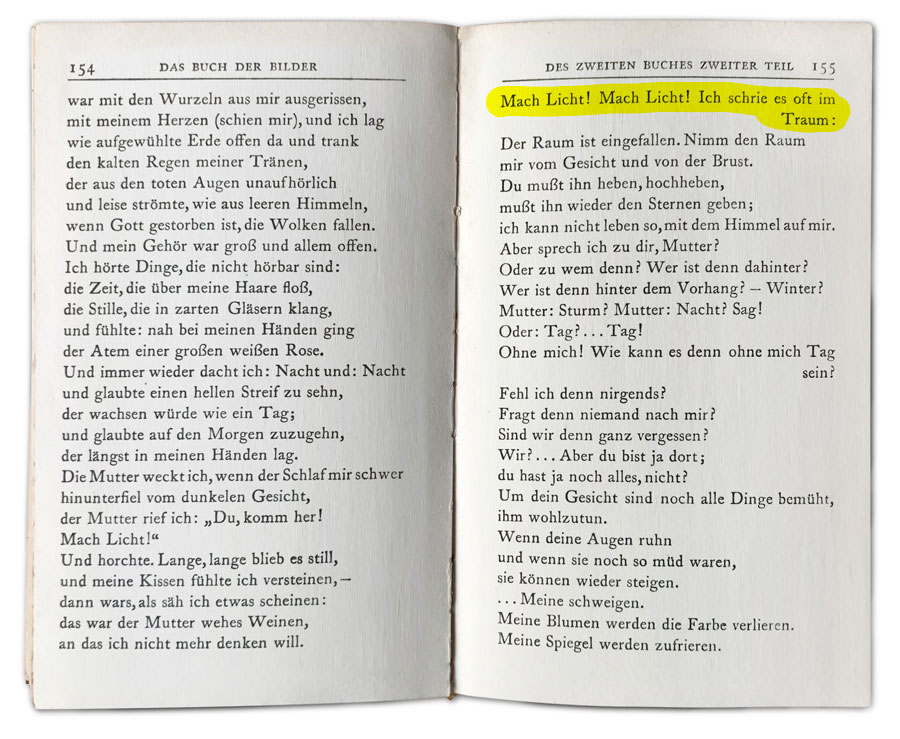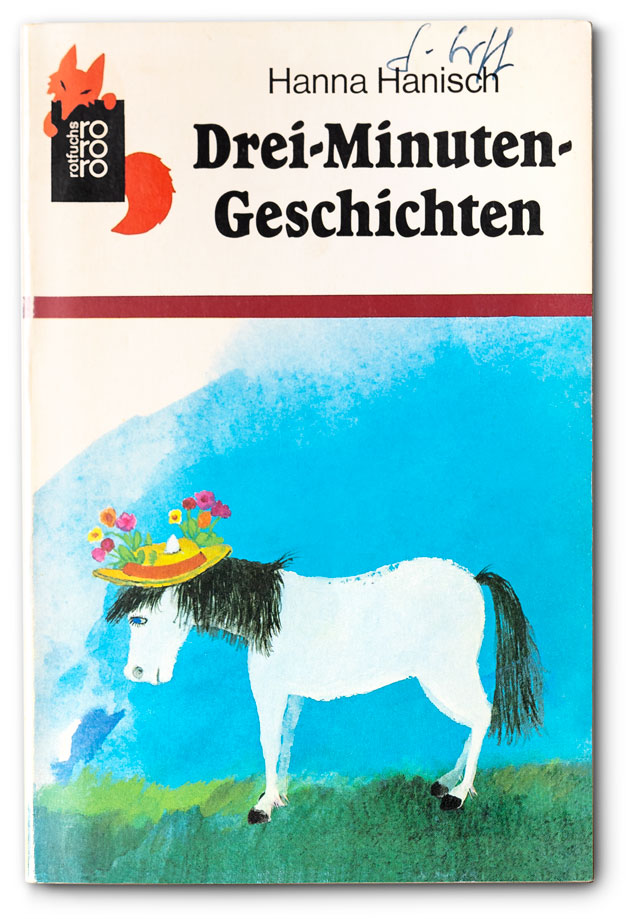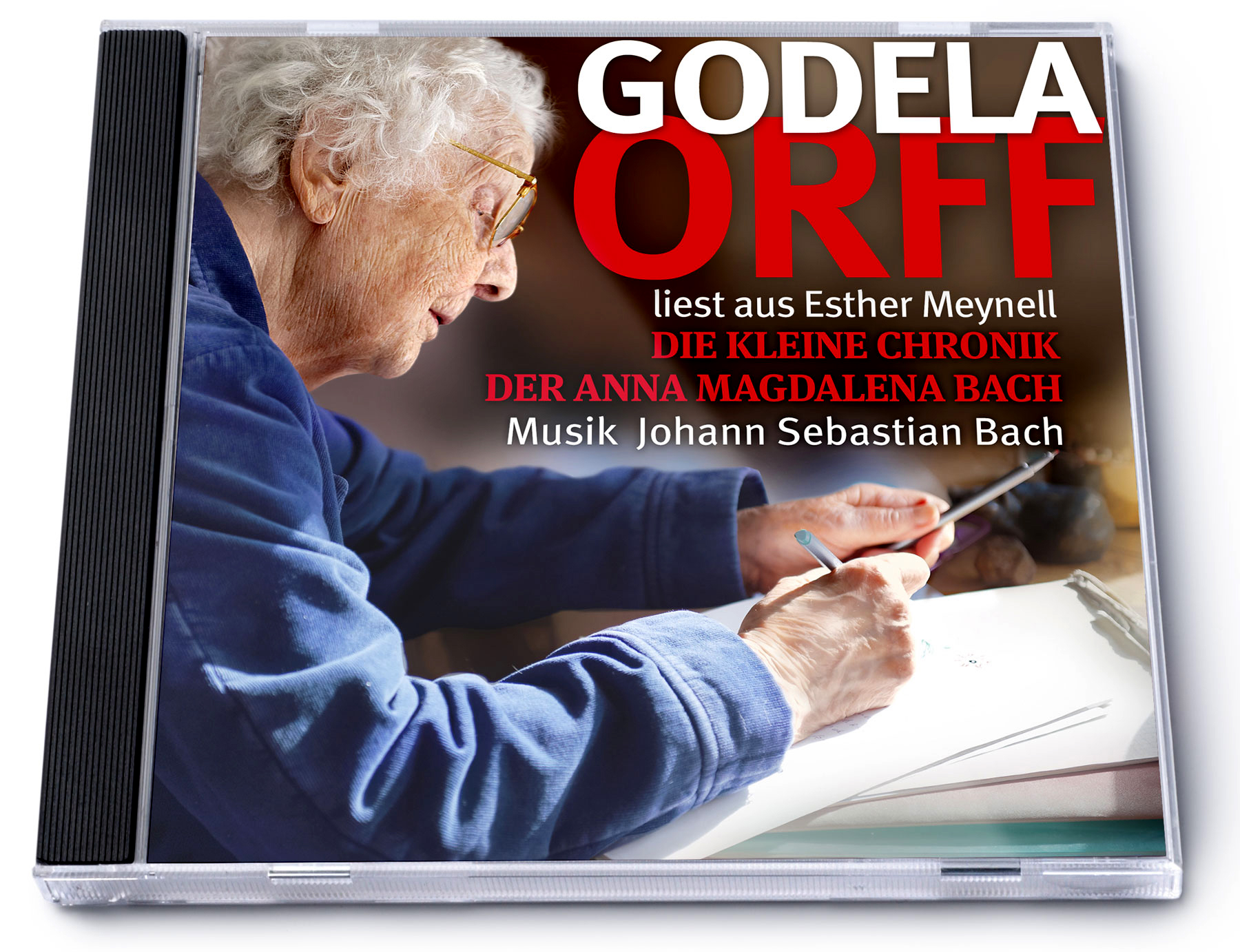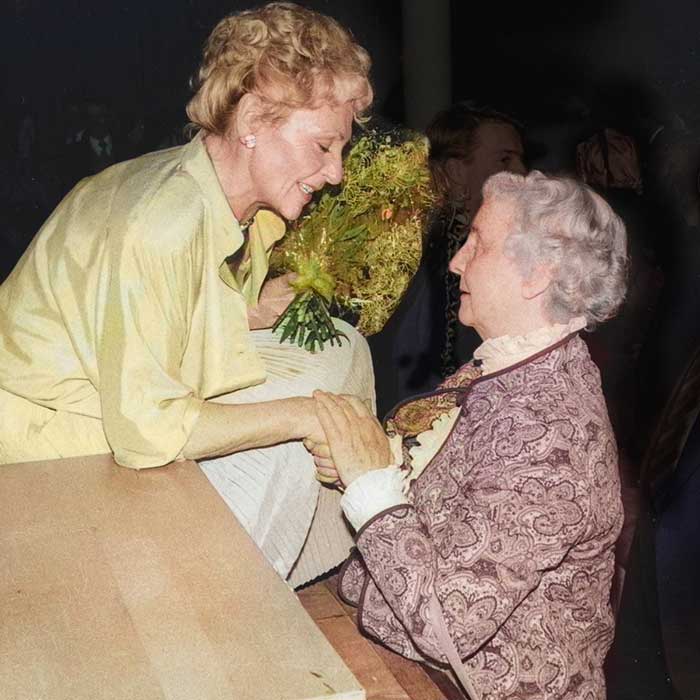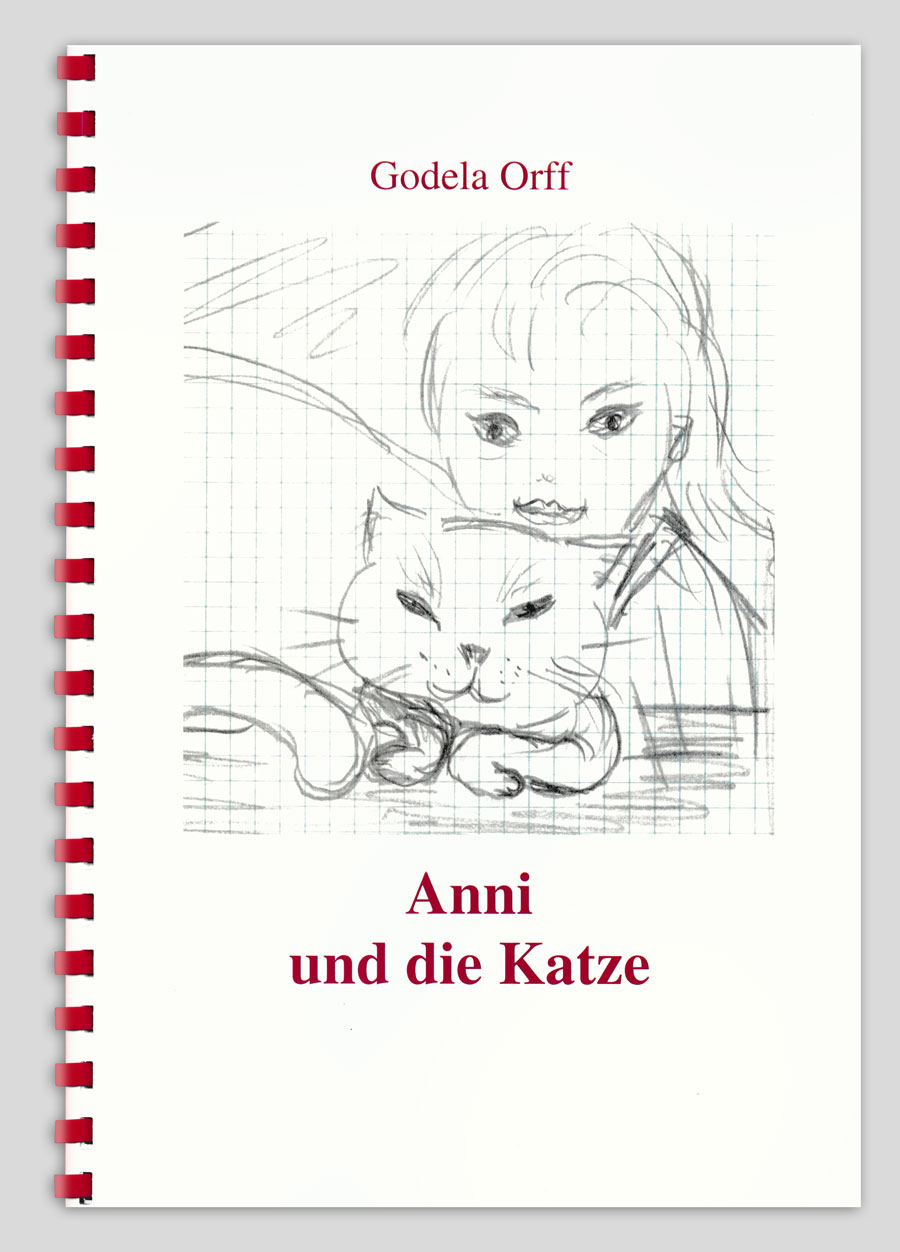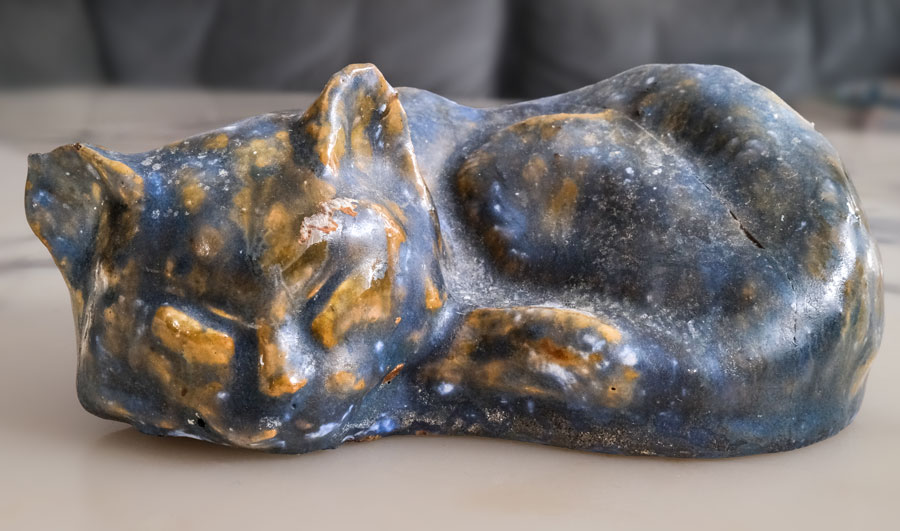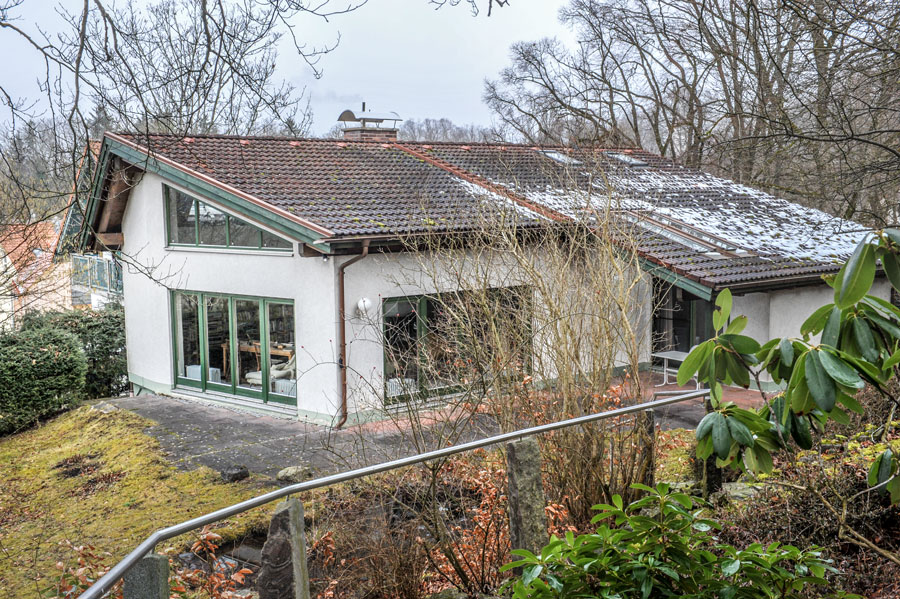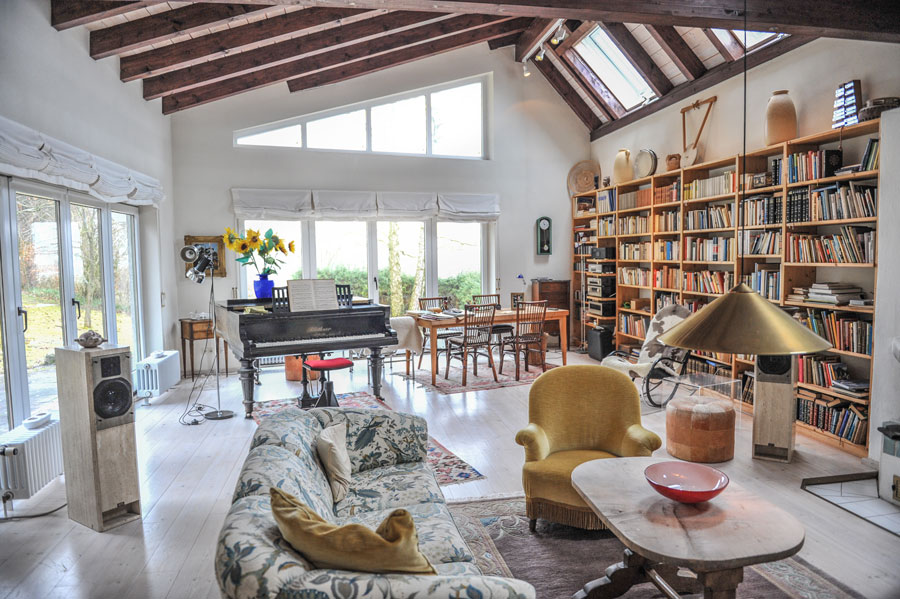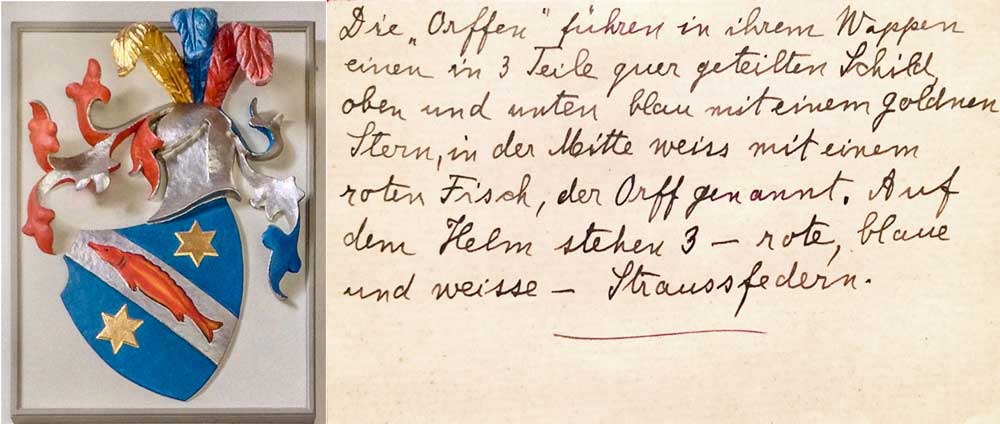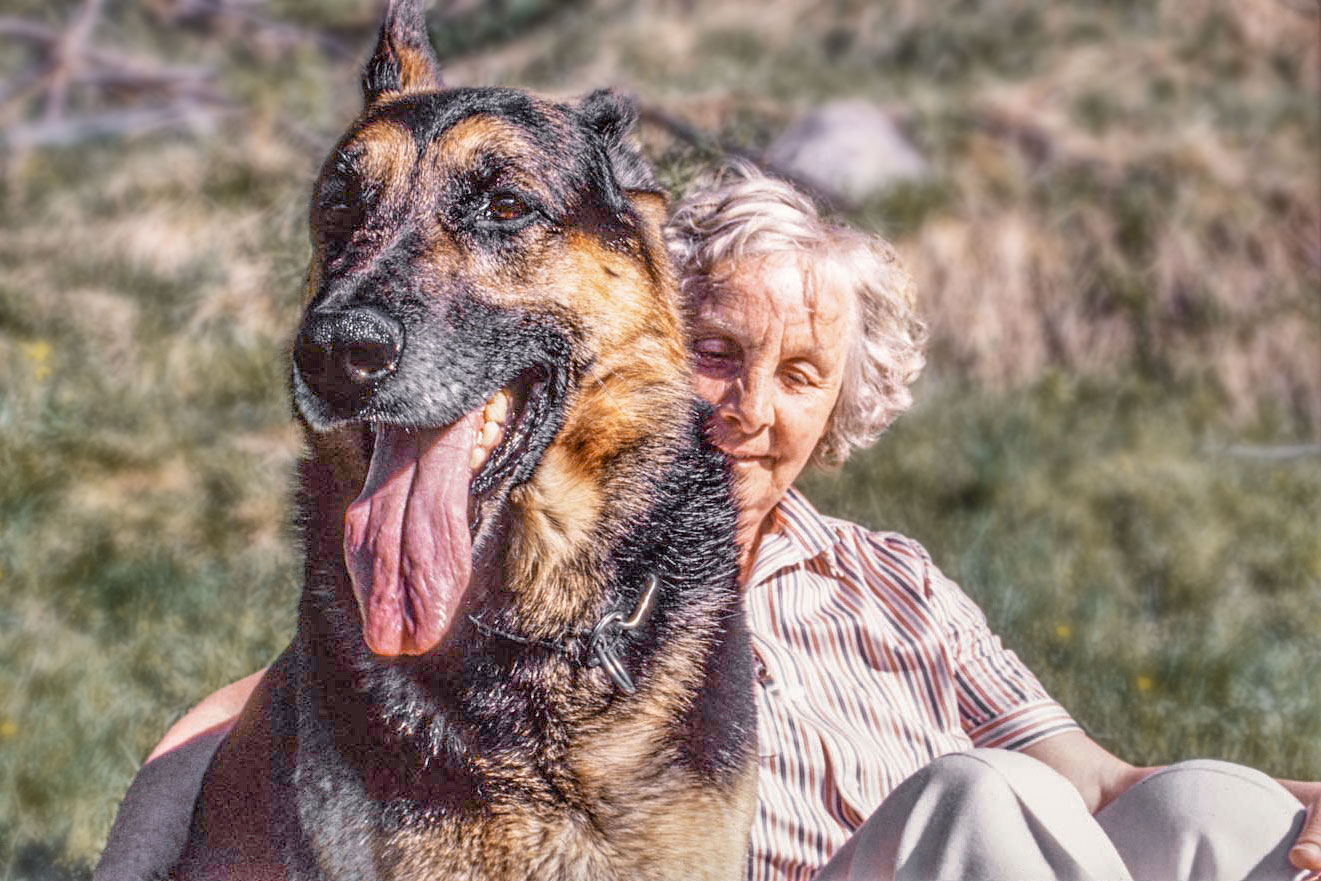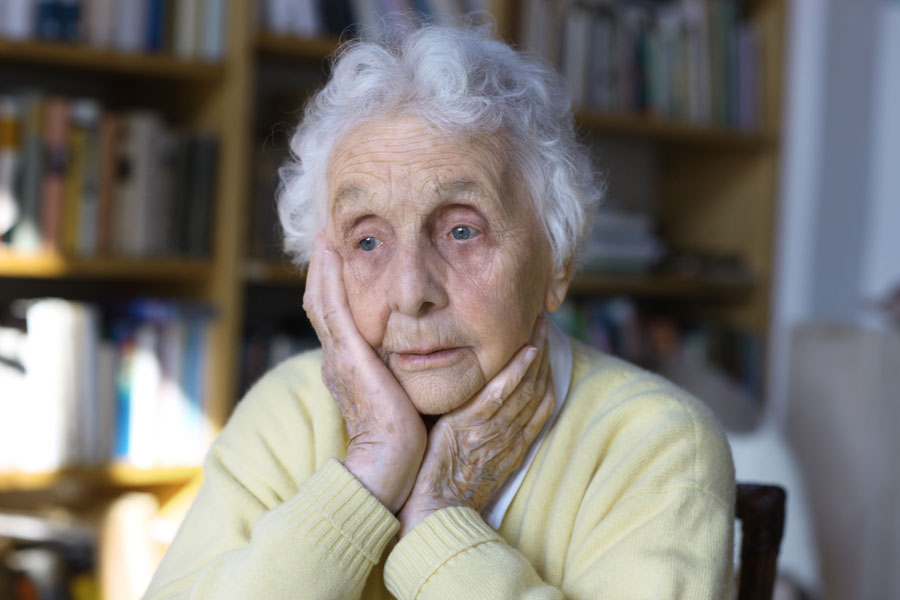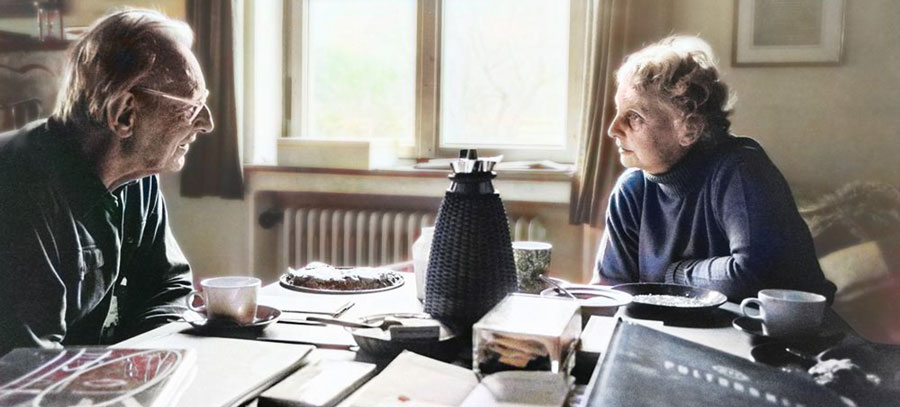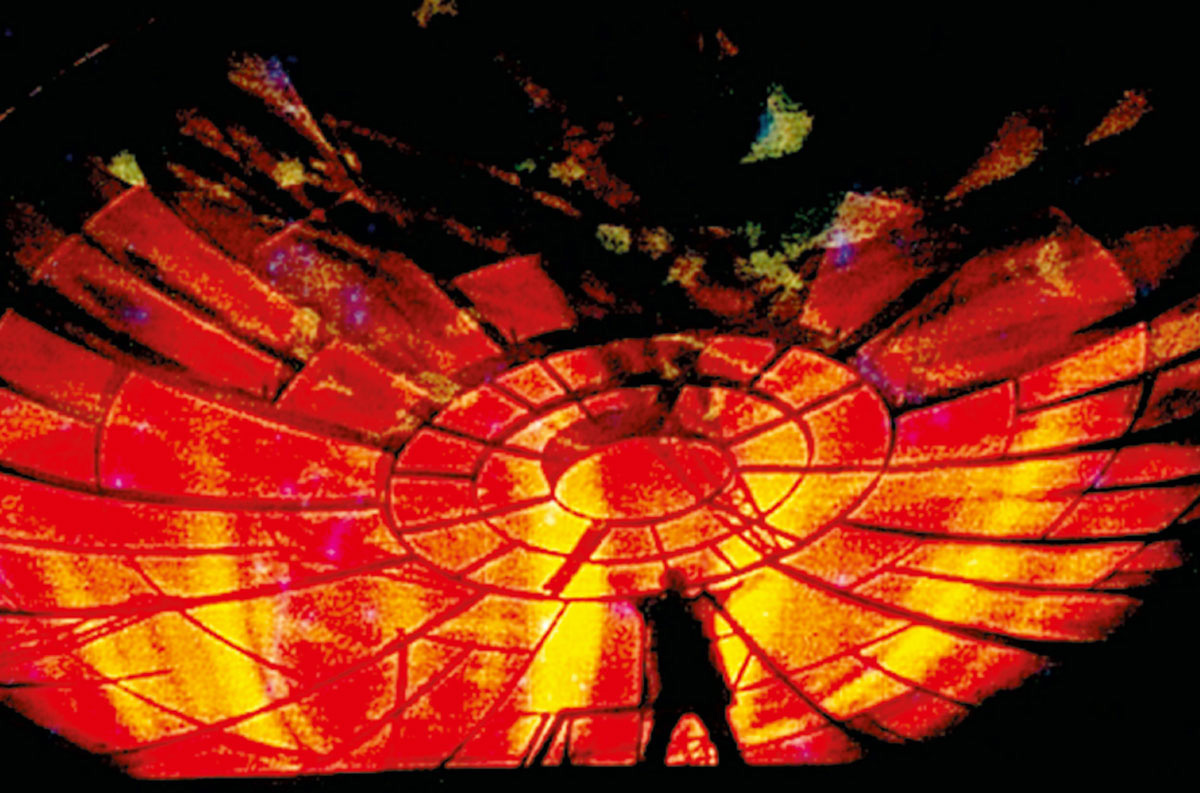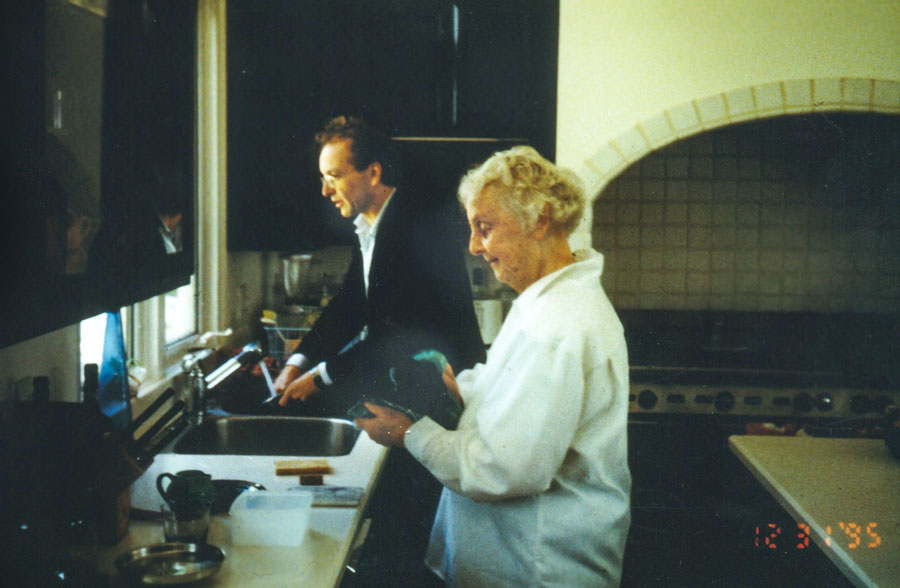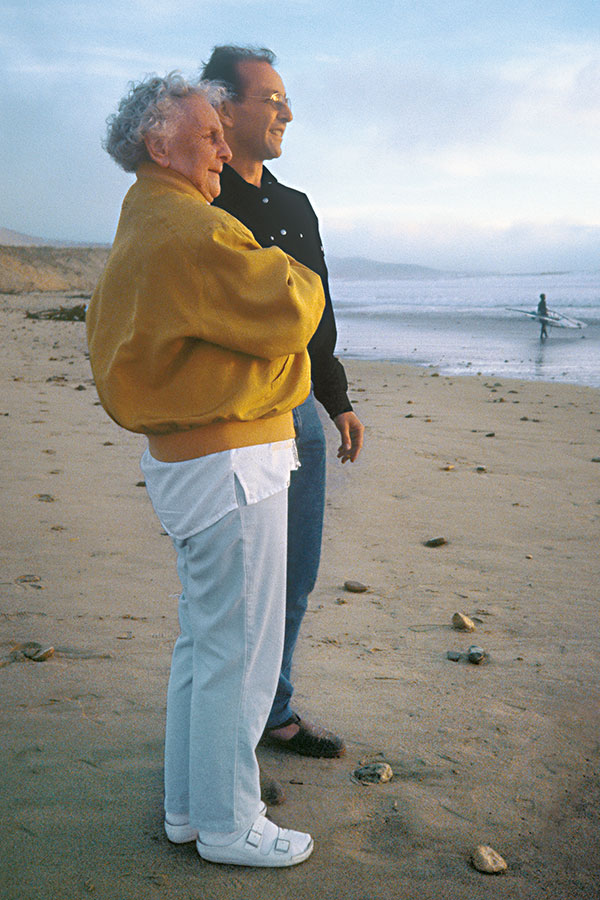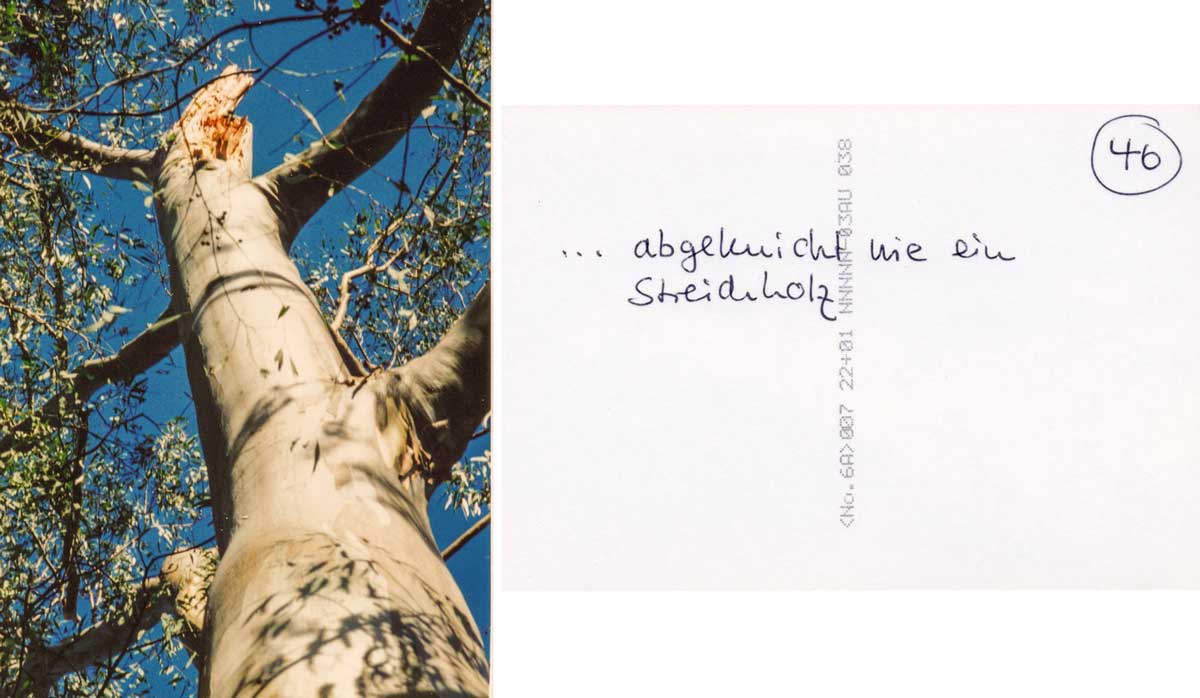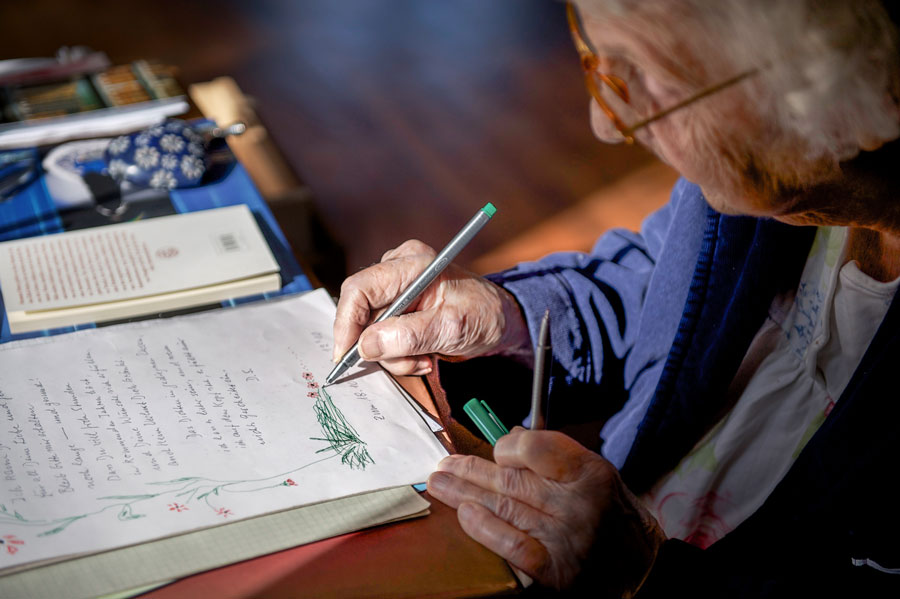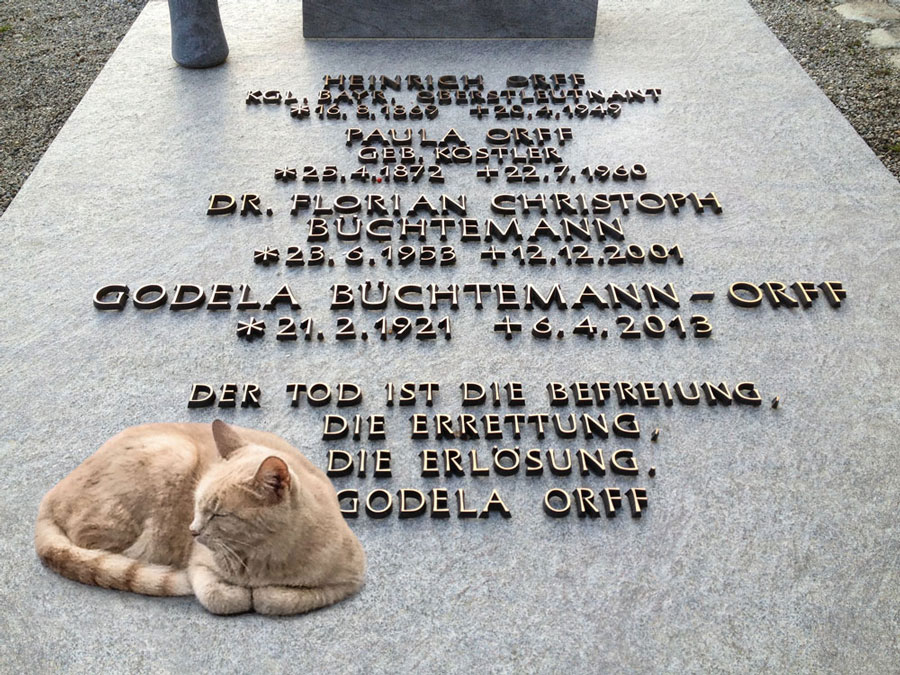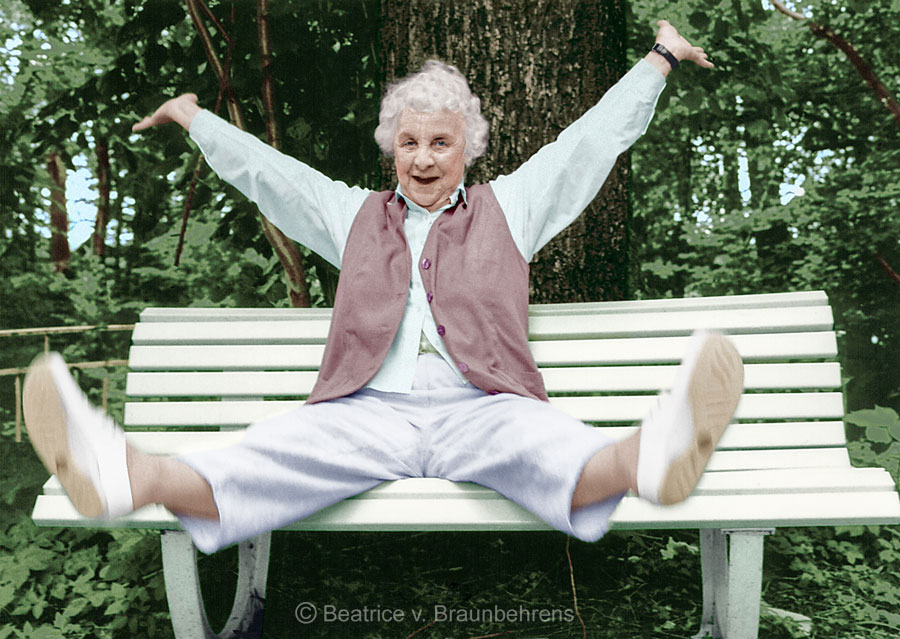How I met Godela Orff
Winter semester 1953. I was starting at medical college at LMU in Munich. But where should I live? Even back then, this was a considerable problem. Finally, I found student lodgings in Munich-Gern with the help of a letting agent.
The letting agent instructed me to ring Mrs Klotz’s doorbell and she would show me the room. Mrs Klotz opened the door and after letting me see the room, said: “If you’re clean, and tidy you can move in here. There is only one bathroom, which both tenants would have to share, and the utmost cleanliness is absolutely essential.” I obviously appeared “clean” enough and was allowed to move in. One of the first things she did, bursting with pride, was to show me her son, Florian, who was six months old at the time and was in his cot on the balcony.
On the stairs of the building where my room was, I occasionally encountered an “elderly” gentleman who was visiting Mrs Klotz. Each time, in his sonorous voice, he would ask me “how my work was going?” Gradually, it dawned on me that this “elderly gentleman” was the composer Carl Orff, and that Mrs Klotz was his daughter, Godela Orff. Although I often listened to “Orff-Schulwerk” programmes, I was by no way involved in the contemporary music scene.
We married in 1959! Carl Orff and my mother Elisabeth Büchtemann, nee Scholefield, a qualified concert pianist, were our witnesses. Mrs Klotz became Mrs Godela Orff-Büchtemann – stage name Godela Orff. I adopted her seven-year-old son, who became Florian Christoph Büchtemann. It was the start of a new family – and a new world had opened up for me.
Godela Orff’s childhood and early years were overshadowed by the separation of her parents when she was very young. Godela was left alone with her father in Munich, while her mother chose instead to pursue a career as a singer in Australia. The parent’s separation left behind a desperately sad child.
Godela spent her first years with her father in Maillingerstrasse in München-Neuhausen, in the house in which Carl Orff had been born. The flat was opposite a barracks, where very often the sounds of “loud drum rehearsals and off-key trumpet playing” were to be heard, as Godela Orff wrote in her book “Mein Vater Carl Orff und ich” (My Father Carl Orff and I).

Her love of animals was evident from a young age: with “Pinzi” at her grandparents’ house in Grafrath
Despite this, these were “very lively and creative years”, wrote Godela Orff.
“Father would thump on the grand piano from eight in the morning until ten in the evening…” Often, he would ask his daughter for her opinion: “‘Do you like this chord, or this passage better?’ Then I would have to listen very carefully, and was proud when he valued my opinion. Which he really did – every time.”
“Eine Bach’sche Fuge konnte unter seinen Händen” (In his hands, a Bach fugue could ….)
All of Carl Orff’s early works were composed in the flat in Maillingerstrasse: “Der Mond”, “Die Kluge”, the “Orff-Schulwerk”, “Carmina Burana”.
„Lohengrin!“
Godela was seven years old when her father took her to see an opera at the Münchener Nationaltheater for the first time: a performance of Lohengrin.
Film document: Godela Orff recites “Lohengrin” in Andechs
To Godela’s great sorrow: she was not allowed to stay with her father in Munich. He was too busy with his composing. The father did not want to let her live with her beloved grandparents. Instead, after passing through several primary schools, she was sent to live with her mother’s relatives in Hamburg. This was a very distressing time for her, filled with many fears. Godela felt abandoned, unable to reach her father or ask him for help. She was also physically overburdened by the long walks she had to take to get to school.
Godela’s health deteriorated visibly. Finally, she was sent to a small boarding school for girls in Switzerland, in the Bernese Oberland, to live with two elderly ladies who took loving care of her. Nevertheless, she was always homesick.
Her artistic and literary talent was already apparent in Switzerland. She wrote several volumes of childhood and adolescent memoirs in a diary she lovingly decorated and illustrated. At the age of 13, she “published” a “Christmas play for my dear, dear …” including very precise stage directions, illustrations, a spoken choir and the typical phrasing and repetitions that her father used.
There were also blissful summer holidays with her father in Munich and her grandparents.

Godela Orff with her grandparents, Paula Orff, nee Köstler, and Lieutenant Colonel (ret.) Heinrich Orff
Die Gabe des Inspirierens (The gift of inspiration)
Klavierspiel mit der Großmutter (Playing piano with her grandmother)
“I saw him conduct only once”, writes Godela Orff. “I was twelve years old at the time. My father was rehearsing St. Luke’s Passion …”
“I only attended one rehearsal session, but I was utterly overwhelmed by his ability to inspire the performers and lift them above themselves. The atmosphere was very tense. Inside, they were rehearsing a passion, while outside SA units were bellowing the “Horst-Wessel-Lied”. My father told me that he had been gripped by an unspeakable dread – the mob was drowning our culture!”, wrote Godela Orff in her book “Mein Vater Carl Orff und ich”.
Collage of the audio file by Michael Rüggeberg.
“Ein einzige mal sah ich ihn dirigieren…” (I saw him conduct only once …)
Her ancestors
Godela Orff came from a family of scholars, mathematicians, astronomers, officers, teachers and musicians.
In his 8-volume documentation “Carl Orff und sein Werk”, Carl Orff wrote: “The pre-eminent person, also in terms of his physique, was my grandfather, Carl von Orff. He retired from his commission as a major general to devote himself entirely to surveying, mathematics and astronomy.”
He continues: “An officer by tradition, he had to resign as a major general because of an eye ailment and after that lived only for his historical works. He was the author of the multi-volume “Handbuch für Gebiets- und Ortskunde des Königreiches Bayern”.
Godela Orff writes: “My grandmother had a intrinsically artistic nature, and had already attained concert proficiency as a pianist by the age of 12! It was therefore natural for her to teach her children Mia and Carl how to play the piano and the basics of harmony from the age of five.”
Carl Orff writes: “My father was an officer through and through. But his domestic circle, his wife and children, were more important to him than anything else. He played the viola in the string quartet. Leading his regiment in the war or in peacetime – he was always fair. His soldiers loved him.”
Alice Solscher was a highly gifted singer and teacher. An artist who “burned at both ends”, as Carl Orff said. She was also a brilliant teacher of speech and song, beloved by her pupils.
In Godela Orff, these many gifts and talents were united to the highest perfection!
She was a gifted artist, a pioneering educator, a philosophical, religious woman, a loving, self-sacrificing mother. Like her mother, Alice Solscher, she was courageous. She always spoke her mind, even though it was not always what the person concerned wanted to hear. At the same time, she loved to laugh and had a wonderful sense of humour and a great deal of charm. Despite her many gifts, Godela Orff remained an exceptionally modest person, and would never display her intellectual superiority in her dealings with other people.
Her vision and gift of prophecy was also shown in her unerring judgement of handwriting. This played an important role, especially in my life!
Godela Orff had the “sixth sense”. She knew in advance what would happen. This was especially true of her relationship with her father.
1937: World premiere of the Carmina Burana
Godela Orff accompanied her father Carl Orff to the world premiere of the Carmina Burana in Frankfurt am Main on 8 June 1937.

With her father at the premiere of his famous and acclaimed work, Carmina Burana, in Frankfurt am Main
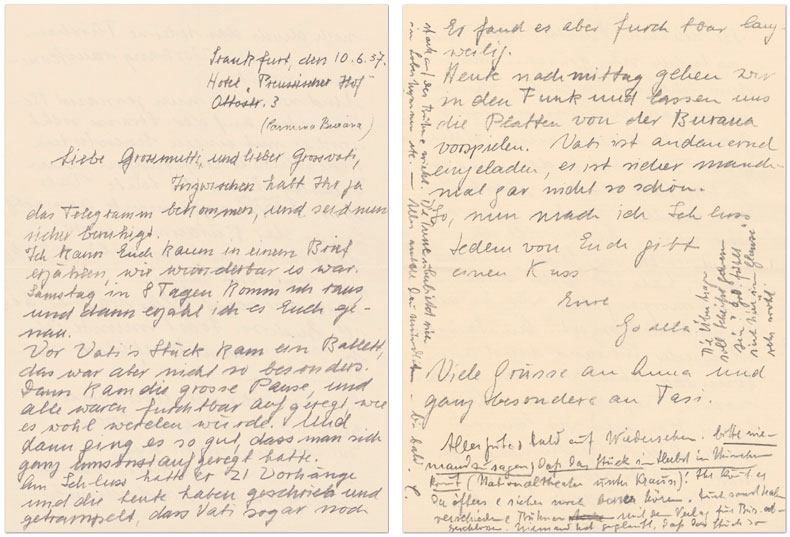
First report of the proud daughter to her grandparents with the famous quote of her father: “The transmission quality is said to have been shit…. Godela feels very much at home here in the spotlight. No one believed that the piece would have such a strong impact on stage. The press outbid each other in praise. I’ll tell you everything else later. See you soon C.”
The second performance took place four days later. In her book, “Mein Vater Carl Orff und ich”, Godela Orff described it as follows: “The head people of the party, this was the Third Reich, are sitting in the auditorium. They will decide whether the piece will be approved. The first part fades… The conductor pauses, waiting or hoping for applause but the auditorium remains icily silent. Then, suddenly, from the proscenium box next to the stage a bright and very audible voice (which was, of course, the young Godela Orff) cries with obvious indignation, “Why aren’t the bastards clapping?” (meaning the party bigwigs whose job it was to decide the future of the piece). Breathless silence in the auditorium. This interjection deflates the tension in one fell swoop, and the applause surges alongside laughter. The performance has been saved.” This concert marked the start of the global success of “Carmina Burana”.
“Warum klatschen denn die Scheißkerle nicht! (Why aren’t the bastards clapping?)”

Father and daughter after the premiere of “Carmina Burana”: Happy – but exhausted! The father rests his head on his daughter’s shoulder
At the age of 16, Godela Orff returned home to her father. Her dream was to become a doctor, but her father lacked the funds to pay for university. Instead, he persuaded her to become an actor, and to apply for a scholarship at the State School of Acting in Munich. He wanted her to start earning an income as soon as possible. Carl Orff had recognised her acting talent from a very early age. Godela Orff had already performed on stage very successfully at school, and had also naturally taken the “leading roles”, as she said.
A great acting career
She followed her father’s advice and at the age of 16 started training to become an actor. She was accepted at the State School of Acting in Munich from a pool of 400 candidates.
This is a document from her apprenticeship: „Ich sollte einem Prüfungsgremium vorsprechen…(I had to audition for an examination committee…)”
While still in her training phase, she was given leading roles at the Bayerisches Staatsschauspiel in Munich! By the age of 18 she had become a permanent member of this ensemble. Soon, she was playing the great classics at the Prinzregententheater, now the Cuvilliétheater, where you could whisper and still be heard everywhere, as Godela Orff wrote.
The newspaper Augsburger Zeitung wrote in its review: “The young artist – only 18 years old – possesses to a high degree the art of the enchanted soul, and thanks to her strong instinct for the essence of a scene is one of the most promising talents among today’s young actors.”
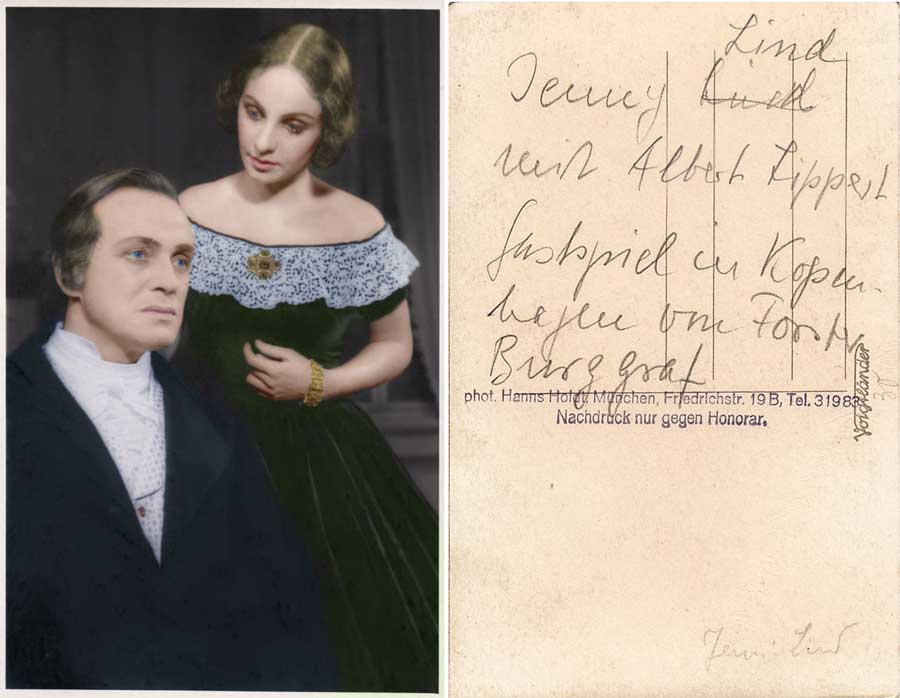
Godela Orff as Jenny Lind with Albert Lippert, 1940. On the reverse: handwritten note by Godela Orff
“This Jenny Lind was decisive for the great success of the play” was the opinion of the Neue Augsburger Zeitung (24.10.1940). Godela Orff as Jenny Lind at the premiere of “Gastspiel in Kopenhagen” by Friedrich Forster at the Residenztheater in Munich.
Godela Orff conquers the press. Those who are fortunate enough to be sketched in a daily newspaper, like Münchner Abendblatt, have truly attracted public interest. Godela Orff had become famous overnight. Perhaps this was a source of irritation for her father, whom nobody in Munich knew then, as Godela Orff told me!
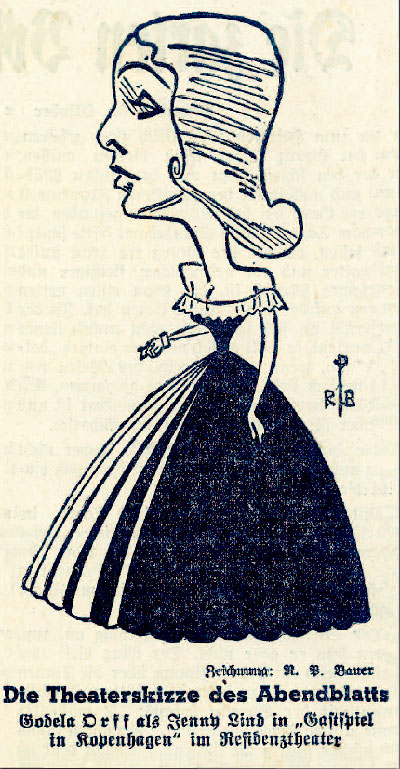
Godela Orff was only 20, and was playing the title role in Gerhard Hauptmann’s play of the same name, “Kollege Crampton”, at the Residenztheater which Godela Orff loved so dearly.
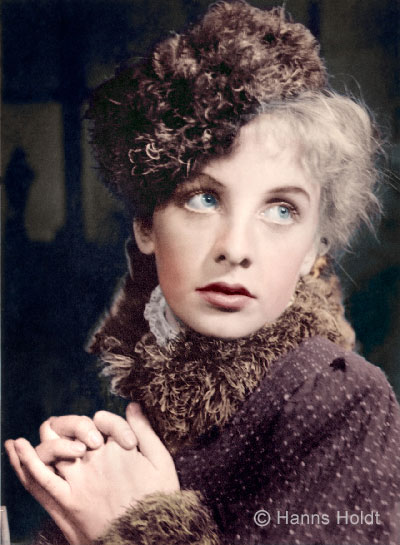
Godela Orff as Gertrud Crampton in Gerhart Hauptmanns Kollege Crampton at the Residenz-Theater München, 1941
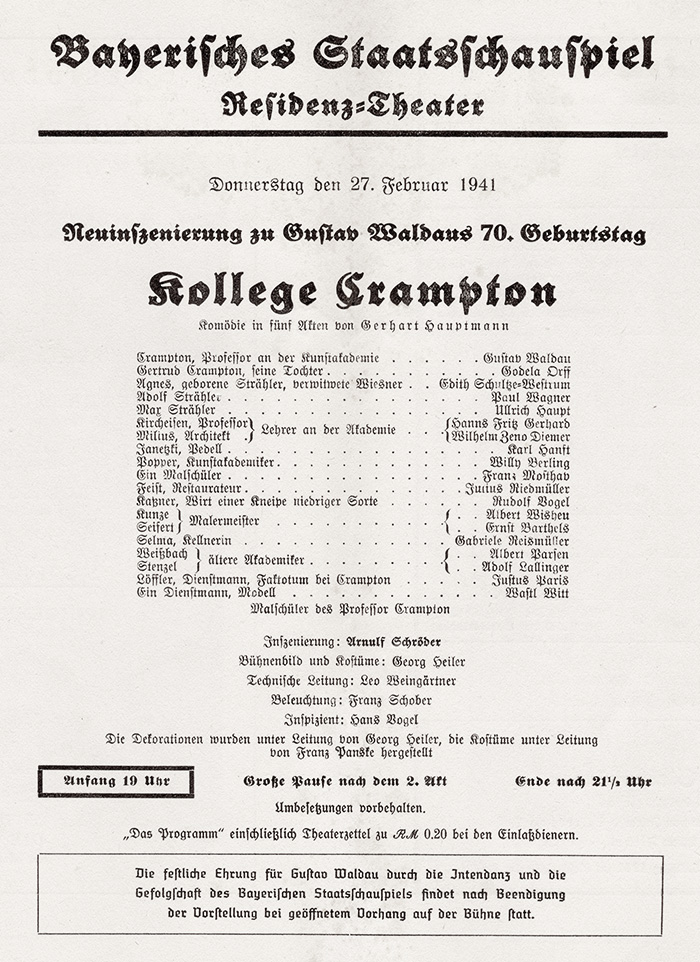
Godela Orff as Gertrud Crampton in Gerhard Hauptmann’s “Kollege Crampton” at the Residenztheater in Munich, 1941
1941: One of her strongest performances: Prothoe in “Penthesilea” by Heinrich von Kleist. The press wrote on 15.12.1941: “A performance that deserves a very special mention is that of Prothoe by Godela Orff. To be a friend to Penthesilea not only calls for a will to serve. Prothoe, torn on the bridge between herself and the queen, between giving up and winning, is a true Kleistian character. To play this character demands a full dramatic resonance. Godela Orff found it and in the large circle of competing actors who were obviously inspired and delighted by this mighty play, emphasizing the dignity of the performance hot and bright in her person.”
Godela Orff plays Agnes in Hebbel’s “Agnes Bernauer”
In his documentation “Carl Orff und sein Werk” (Carl Orff and his Work) (published by Hans Schneider, Tutzing), Carl Orff wrote: “My daughter was fortunate to be engaged by the Bayerisches Staatsschauspiel theatre immediately after graduating from drama school, and at this theatre she was supported and encouraged to take on larger parts. As early as her second year, she was given a leading and title role in Hebbel’s ‘Agnes Bernauer’.”
Carl Orff writes “Die Bernauerin” for his daughter
Godela Orff’s extraordinary theatre successes, especially “her” Agnes in Hebbel’s “Agnes Bernauer”, inspired her father to write a “Bavarian play, a festival play for Munich”. The daughter had inspired her father to write a new work – as she writes in her book “Mein Vater Carl Orff und ich”.
1947: World premiere of “Die Bernauerin” with Godela Orff in the title role – a great success with the audience and the press!
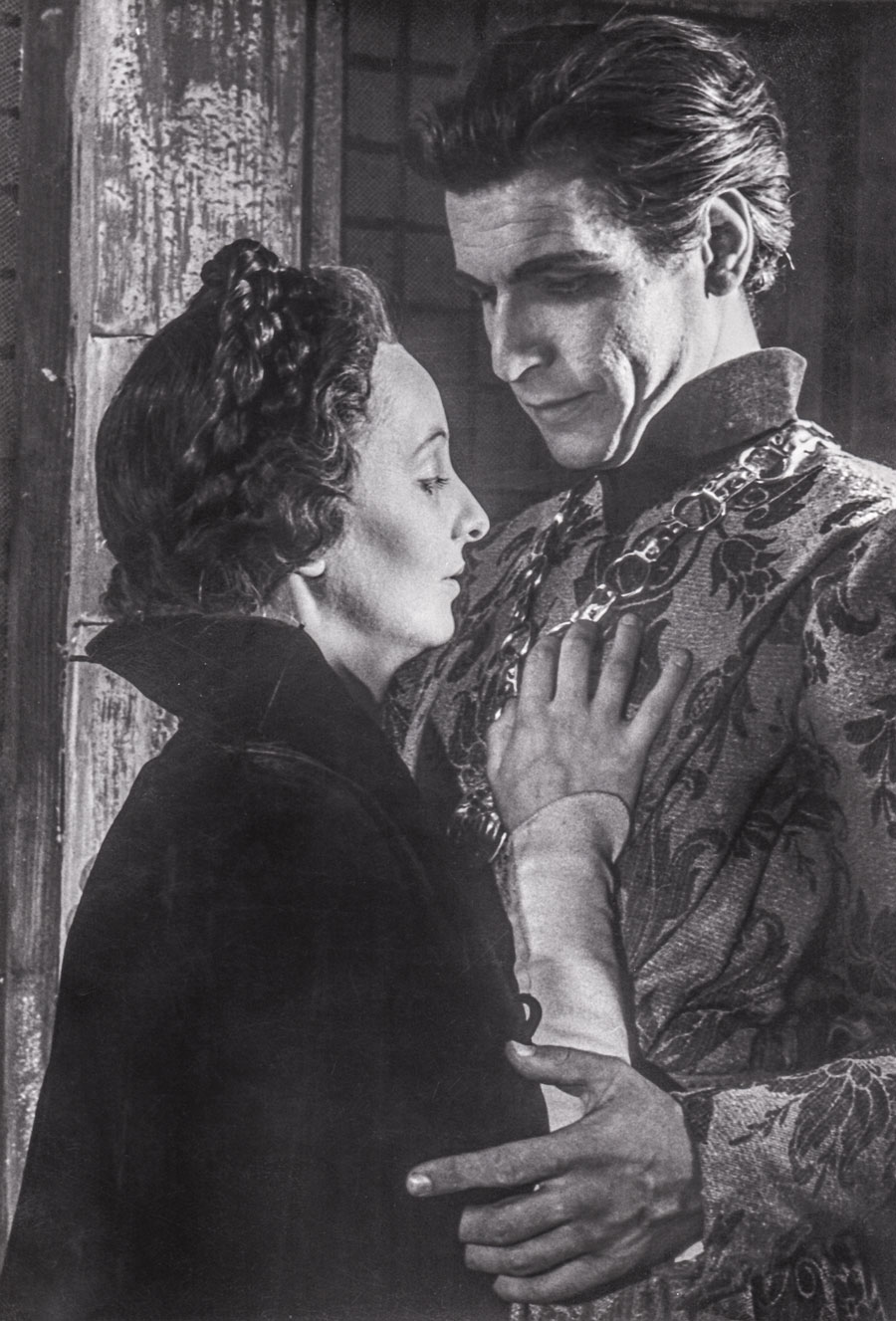
Godela Orff and Friedrich Schoenfelder at the world premiere of “Die Bernauerin” am 14. Juni 1947 in Stuttgart
The press wrote: Godela Orff in the title role as Agnes at the premiere of “Die Bernauerin” on 14 June 1947, Württembergisches Staatstheater Stuttgart. The regional newspaper Schwäbische Landeszeitung covered the premiere on 20.06.1947 in Stuttgart, writing: “Godela Orff channelled the primeval mystery of Bavarian onomatopoeia in all its rhythmic flexibility and sonority in every single paragraph: she was a woman of Bernau who drew her power from the centuries-old Bavarian expression and dialect in a truly delightful embodiment of this role.”
For her interpretation of Agnes, wrote Godela Orff, it was important for the figure of Agnes to be formed entirely from ‘being’, based on her presence, without the ‘appearance’ of helpful outward facades. Agnes is an almost completely silent presence during the first part of the play, which demanded absolute concentration on the idea of ‘being there’, relying only on charisma. Godela Orff said:
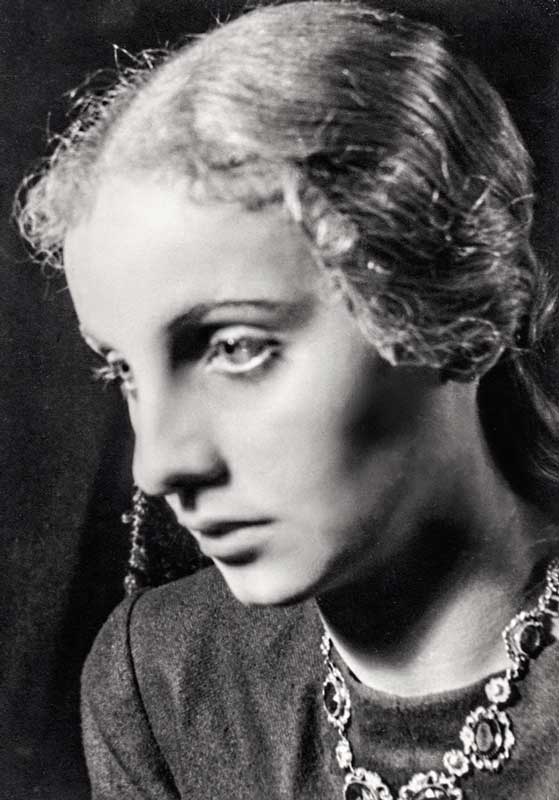
Concentration on “being”
Audio: Konzentration im „Da-Sein“ (Concentration on “being”)
Great success for Godela Orff and the ensemble!
It was the first world premiere after World War II on German soil – and for the first time in front of an international audience.
A piece of history: In 1947, two years after Germany lost World War II, Carl Orff’s “Die Bernauerin” was premiered. “DIE NEUE ZEITUNG, Eine Amerikanische Zeitung für die Deutsche Bevölkerung” (the American newspaper for the people of Germany) featured Godela Orff on its front page and wrote: “Godela Orff, the daughter of composer Carl Orff, performed the title role in her father’s new work, ‘Die Bernauerin’, in Stuttgart to great acclaim.” (Photo: Laun)
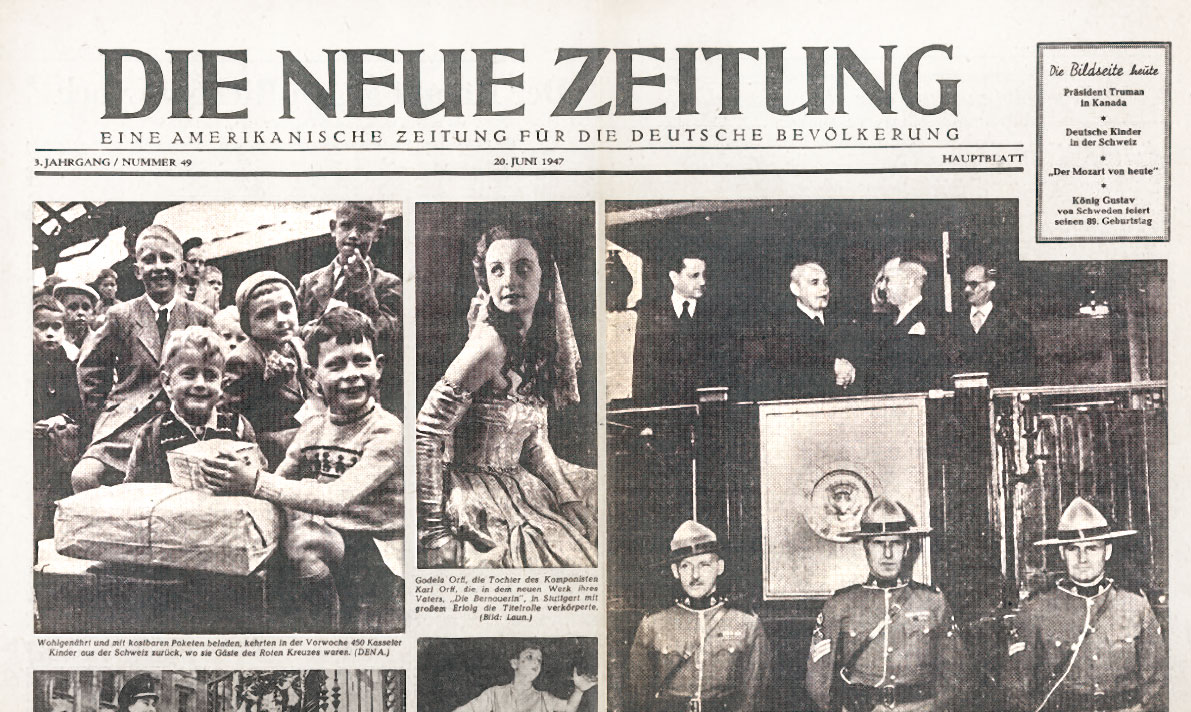
An impressive document: Godela Orff on the front page of the
“Amerikanische Zeitung für die Deutsche Bevölkerung”, 1947.
Godela Orff played the Bernauerin for ten years in Munich at Prinzregententheater. it was here that the play was at long last performed as a festival play, just as her father had wished, wrote Godela Orff in her book “Mein Vater Carl Orff und ich”.
Video: Godela Orff and “Die Bernauerin”
Film document: Scenes from the Jutta Netzsch film, 1995: “To mark the 100th Birthday of Carl Orff”, Part 1 – Godela Orff and “Die Bernauerin”
Godela Orff enjoyed a dream career without having to invest great effort – as she writes in her book “Mein Vater Carl Orff und ich”. At the same time, she was “very hardworking”. These were stormy turbulent times. World War II was raging, and the actors had to continue performing despite many privations, the destruction of their homes in bombings, and they were never allowed to allude to the horrors of the war. The audience was to be entertained and distracted, in accordance with the tenets of Nazi propaganda in the Third Reich. Godela Orff writes: “If it was a sad play, you had to be sad, if it was a comical play, you had to be comical. That’s where you learned discipline.”
When Godela Orff stepped on stage and the spotlight was on her, a murmur would go through the audience in appreciation of her beauty, she would say. There was complete silence in the auditorium. From then on she was no longer “Godela Orff”; instead, she identified herself utterly with her roles, shedding everything non-essential.
Godela Orff’s exceptional ability remember things helped her considerably in learning her roles. For example, she was able to memorise overnight a text that was completely unknown to her and, if a co-actor became indisposed, could play the lead role in a play the next day without further rehearsals.
1957: Despite her success, Godela Orff retires from the stage
Even Gustav Gründgens’ offer of joining his ensemble in Berlin could not change her mind. Her mother, Alice Solscher, was also a member of the ensemble (playing the role of Frau Marthe in Goethe’s “Faust”, amongst other roles).
His daughter’s decision to retire from theatre was absolutely incomprehensible to Carl Orff. After her spectacular successes, he simply could not understand why his daughter did not want to continue her career. Instead, Godela Orff wanted to start a new life and follow her dream of enjoying family life with her husband, her son and her beloved animals.
But she was soon back in the spotlight!
1957-1959: The world’s first live TV series production of the “Orff-Schulwerk” with Godela Orff and Gunild Keetman on Bavarian Television (BR)
The Bayerischer Rundfunk (BR) television station commissioned Godela Orff and Gunild Keetman, co-founder of the Orff-Schulwerk, to produce the world’s first live television series of the “Orff-Schulwerk: Music for Children”. The programme was comprised of 18 live shows. Each of these required careful preparation, the selection of the pieces from “Orff-Schulwerk” and rehearsals with the participating children. Godela Orff mentioned in passing that her natural ability to perform live in front of the cameras would not have been possible without her years on the stage. The modest, highly gifted flutist Gunhild Keetman found it far more difficult to act naturally in front of the cameras.
The two great teachers, Godela Orff and Gunild Keetman, managed to guide and accompany the children with ease and to encourage them to perform at their best – with music, dance and fun!
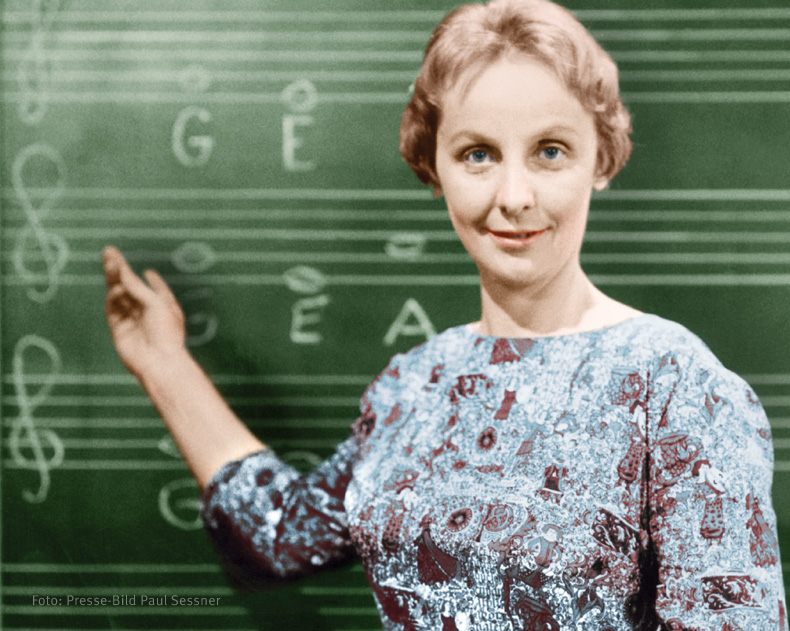
Godela Orff in the live television series of the 18-part programme “Music for Children” about the Orff-Schulwerk on television, 1957-1959
Orff-Schulwerk (music for children)
Audio: Carl Orff and Godela Orff talk about the “Orff-Schulwerk”
Excerpts from the audio book “Mein Vater Carl Orff und ich”
The foundation of the Schulwerk
Audio: “Musik für Kinder gehört in die Schule…“ (“Music for children should be taught at school…“)
From a lecture by Carl Orff on the “Orff-Schulwerk”
„Ohne Gunild Keetman wäre das Orff-Schulwerk nie entstanden…“ (“Without Gunild Keetman there would never have been an “Orff-Schulwerk …“ ) From a lecture by Carl Orff on the “Orff-Schulwerk”:
„Das Schulwerk beginnt… und endet mit Goethes Walpurgisnacht…“ (“The Schulwerk begins … and ends with Goethe’s “Walpurgisnacht”…“ )
Godela Orff writes:
Once you have succeeded in hearing and feeling music and the spoken word become one, wonderful new spaces open up. The “Schulwerk” takes us there. The “Schulwerk” has become an essential part of music education and has been translated into 18 different languages.
Godela Orff narrates the “Orff-Schulwerk” for a record production
Godela Orff narrated all the spoken pieces of the Orff-Schulwerk for a record production 1963-1975. “…she was, after all, very familiar with her father’s linguistic diction”, as she wrote in her book “Mein Vater Carl Orff und ich”. Directed by Carl Orff and Gunild Keetman.
1969-1975: Godela Orff teaches at the Orff Institute in Salzburg
Godela Orff was commissioned by the Mozarteum University in Salzburg to set up a new department for “Speech Education and Recitation” in collaboration with the Orff-Schulwerk educational concept for music and dance. In her book “Mein Vater Carl Orff und ich”, she writes: “And so suddenly I had become a lecturer! Without my 20 years’ experience on stage this would simply not have been possible. As there was no curriculum for ‘language with music’, I was free to let my imagination take control, to try out things, to improvise. This gave me great pleasure, as it did the students, who joined in all experiments with great enthusiasm. Finally and with a lot of hard work, we performed on stage – it was a success!”
Audio: Da es keine Unterrichtsanleitung auf dem Gebiet „Sprache mit Musik“ gab…(As there was no curriculum for ‘language with music’…)
1992: Godela Orff publishes her book, “Mein Vater Carl Orff und ich”
The former publisher of the renowned Piper-Verlag in Munich encouraged Godela Orff to write a book about her stage career and also about her relationship and experiences with her father. The book was an immediate success! By 1995, Piper published a second edition, and there was demand for a third edition. Due to other projects in the Piper publishing house, the third edition was published by Henschel in 2008 with a new layout and photographs.
There was great interest in the book, and Godela Orff was repeatedly asked to read from it: Everyone wanted to experience her in person. With her charisma, her musical style of reading, her gift of interpretation. She read for the for the listeners of the Blind Association in Munich, and to young aspiring actors in Berlin.
At Schloss Elmau, she read with with harpsichordist Anna Barbara Speckner. These were moments of the highest inspiration and spontaneity. Both were masters of their craft.
Audiobook: Godela Orff – “Mein Vater Carl Orff und ich”
In the booklet for her audiobook, Godela Orff wrote “I was repeatedly asked to tell people about my father, and that is something I took great pleasure in doing. As I know that there will come a point when I will no longer to be able to do this, I decided to write a book…But what was missing was the music that I was writing about in my book, that I could hear inside me, but not my listeners.” This is how this audiobook came to be produced.
1998: Godela Orff narrates and presents: Carl Orffs “Kleines Welttheater” “Der Mond”. (publisher Max Hieber KG)
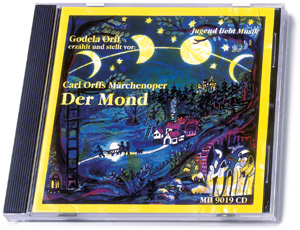
Awarded the Leopold 1999 media prize by the Association of German Music Schools. Musical director: Michael Rüggeberg
Godela Orff on television
Godela was repeatedly asked by television stations to talk about her life:
1979: Television production on SWR: “Ich trage einen großen Namen” (I have a famous name)
1992, 1993: Bavarian Television: three-part series “Unter unserem Himmel” (Under our sky) Godela Orff, “Mein Vater Carl Orff”
2003: Bayern alpha: Interview with Dr. Ernst Emrich2005: arte: Interview to mark the centenary of Carl Orff’s birth
2005: arte: Interview to mark the centenary of Carl Orff’s birth
Godela Orff’s audio library: When the spoken word becomes music
A historical recording: Godela Orff reads at the Salzburg Festival 1949.
To mark the 200th birthday of J.W. v. Goethe, the artist was invited to read from “Goethes Briefwechsel mit einem Kinde” (Goethe’s Correspondence with a Child) by Bettina von Arnim. In her Book “Mein Vater Carl Orff und ich”, she writes: “After the reading, during which I had the impression that I had reached and touched the audience with Bettina’s letters, my father said, ‘You didn’t read – you were Bettina – you two were one’. That is exactly what I had felt, too. And is it any wonder? Bettina’s life was shaped by her love for Goethe, and mine by my love for my father…”
The text is from the “Die Parthenon Bücher” edition, published by H. E. Günther & Co., Stuttgart, in 1947.
A document that reveals Godela Orff’s astonishing interpretative artistry:
“Die Blinde”
by Rainer Maria Rilke
Godela Orff spent many years occupied with the lives of blind people. With her sensitivity, the fine style of her speech and declamation, and her eagerness to reach out to those who cannot see, she also enriched the lives of these people.
“Bring light! Bring light! I screamed it in dreams.” Few will remain untouched by this cry from the reading…
The poem is read from “Das Buch der Bilder” by Reiner Maria Rilke, Insel-Verlag, Leipzig, 1928.
Godela Orff reads from the
Drei-Minuten-Geschichten
by Hanna Hanisch
With virtuosity and obvious pleasure Godela Orff reads two stories by Hanna Hanisch. The prelude to the stories is the infectious polka “Mäuschenmusik” by the young composer Wilfried Hiller on piano, Karl Peinkofer on drums and others.
The stories were read from the Rowohlt Taschenbuch edition (1978).
Godela Orff reads from
Die kleine Chronik der Anna Magdalena Bach
by Esther Meynell
With music by J.S. Bach
Godela Orff wrote the following about this recording:
In 1930, the British writer Esther Meynell published “The Little Chronicle of Anna Magdalena Bach”, a very lively memoir of Anna Magdalena, who was married to the great cantor of the Thomasschule, Johann Sebastian Bach, for thirty years. She writes about his untiring devotion to music, about his severity towards himself and others, and his deep piety.
This book never fails to move and inspire me, and I have repeatedly read from it in public readings, from a version I abridged myself. It is a great pleasure to include the wonderful music of J.S. Bach on this CD, which enhances the pleasure of the text even further.”
“Love is the fulfilment of the law”. This sentence from the Luther Bible, which Bach repeatedly read to his family, seems to me to stand above the life of Anna Magdalena Bach with her unconditional devotion to her brilliant husband, her large family and his music.
This is a recording that you should listen to with your whole heart…
Text selected and interpreted by Godela Orff. Music: J.S. Bach. Music selected by Godela Orff, Michael Rüggeberg, Gerhard Büchtemann. Total running time: 62:15 minutes.
The text was read from the Esther Meynell’s book “Die kleine Chronik der Anna Magdalena Bach”, Koehlers Verlagsgesellschaft, Herford, 1985.
Works and performers:
Track 1
Introduction
Track 2
“Great Fantasia in G minor” (organ). BWV 542. Karl Richter performing on the organ of Jægersborg Church near Copenhagen,1964. D.G. 431 866-2. (1:09)
Track 3
“Willst Du dein Herz mir schenken (Aria di Giovannini)” from the Notebook for Anna Magdalena Bach.1966. BWV 518. Elly Ameling, deutsche harmonia mundi. GD 77150. (0:35)
Track 4
“Brandenburg Concert No. 6” BWV 1051. Münchener Bach-Orchester, Karl Richter. Munich, Schloss Schleißheim,1970. DG 004400734147. (0:45)
Track 5
Choral “O Mensch, bewein dein Sünde groß” from the St Matthew Passion. BWV 244. Münchener Bach-Chor, Regensburger Domspatzen, Münchener Bach-Orchester, Karl Richter. Munich, Herkules-Saal, 1979. D.G 427704-2. (2:29)
Track 6
Recitative (alto) “Ach, Golgatha” from the St Matthew Passion. BWV 244. Janet Baker (alto), Münchener Bach-Orchester, Karl Richter. Munich, Herkules-Saal, 1979. D.G 427704-2. (1:40)
Track 7
“Menuet” from Suite No. 1 in C major. BWV 1066. The English Concert, Trevor Pinnock. Archive Prod. D.P. 423493-2. (0:47)
Track 8
“Three-part Inventions C major”. BWV 788. Glenn Gould, piano. Moscow, 1957. Sony CB 751 CDM CP SMK 52685. (1:02)
Track 9
“Fugue in B minor” (organ). BWV 544. Karl Richter performing on the organ of Jægersborg Church near Copenhagen,1967. D.G. 431866-2. (0:59)
Track 10
Chorale “O Gott, du frommer Gott” (organ). BWV 767. Karl Richter performing on the organ of Jægersborg Church near Copenhagen,1969. D.G. 431 866-2. (1:05)
Track 11
“Badinerie” from Suite No. 2, B minor. BWV 1067. Wolfgang Schulz, flute, Stuttgarter Kammerorchester, Karl Münchinger, 1986. Decca 440 255-2. (0:56)
Track 12
“Prelude A minor” (organ). BWV 543. Karl Richter performing on the organ of Jægersborg Church near Copenhagen, 1967. D.G. 431 866-2 (1:34)
Track 13
Chorale melody “Kommst du nun, Jesu, vom Himmel” (organ). BWV 650. Karl Richter performing on the organ of Jægersborg Church near Copenhagen, 1967. D.G. 431 866-2. (01:12)
Track 14
“Contrapunctus 1” from The Art of the Fugue. BWV 1080. Juilliard String Quartet. Washington, D.C. 1987. Sony S 2 K 45 937. (01:33)
Track 15
“Sinfonia” from the cantata “Ich hatte viel Bekümmernis”. BWV 21. Münchener Bach-Orchester, Karl Richter. Munihc, Herkules-Saal, 1969. Archive Prod. 439 380-2. (1:02)
Track 16
Chorale “Vor Deinen Thron tret’ ich hiermit” from The Art of the Fugue. BWV 1080. Juilliard String Quartet. Washington, D.C., 1987. Sony S 2 K 45 937. (1:09)
Track 17
Choral “Magnificat”. BWV 243. Münchener Bach-Orchester, Karl Richter, 1962. D.G. 419 466-2 GGA. (1:01)
Track 18
Chorale “Komm, o Tod, du Schlafes Bruder” from the Kreuzstab cantata “Ich will den Kreuzstab gerne tragen”. BWV 56. Münchener Bach-Chor, Münchener Bach-Orchester, Dietrich Fischer-Dieskau, Karl Richter. Munich, Herkules-Saal, 1969. Archiv Prod. 439 395-2. (2:09)
Teacher training seminars at Bavarian grammar schools
Immer wieder wurde Godela Orff gebeten, Gymnasiallehrern beim Unterrichten zu helfen. So auch in München. Am Starnberger Gymnasium übernahm sie die Schirmherrschaft für die Schüler- und Lehreraufführung der Die Bernauerin. Besondere Ehrungen und hohe Wertschätzung erfuhr Godela Orff in der Lehrerfortbildungsstätte in Alling.
Godela Orff – a person of many talents
Godela Orff wrote poetry and fairy tales, drew and made pottery models…
The story of “Anni und die Katze” (Annie and the Cat), “Das Rosenelflein” (The Rose Elf), “Der Jüngling und das Rehlein” (The Boy and the Fawn) – all of these tales sadly remain unpublished, because that is how Godela Orff wanted it.
Godela Orff worked well into her last years on her book “Anni und die Katze”. Right up until the end, she would dictate new chapters for this book. Sadly, it remained unfinished. Modern-day readers, I am sure, would have loved this captivating book, and would have been inspired by the courage of the protagonist Anni as she sets out on new paths!
Godela Orff, the architect
Godela Orff designed a house and adjacent studio for her son on the property in Unteralting that she had inherited from her father. The house was built according to ecological principles.
Her love of animals
Godela Orff loved animals from her earliest days. Particularly cats, but also her loyal companion “Dido”, an Alsatian shepherd dog. Later in life, she discovered the joy of Iceland ponies.
Philosophy and religion
Godela Orff wrote: “I had long since immersed myself in philosophy and religion. Nothing captivated me more than the manifold paths man can take to fathom the meaning of life…”
Her library was packed with works about religious philosophy. She was interested in – and practiced – yoga as a spiritual mindset, as a source of power for the body and soul. She performed breathing techniques and exercise therapy.
Godela Orff also sought contact with Hans Küng, the great theologian; she read his publications, engaged with Hans Küng’s global ethic for international understanding between Christians, Jews and Islam. “Beat swords into ploughshares” – Hans Küng was a great believer in the message on the memorial in front of the UN headquarters in New York, and appealed to the world to lay down arms and give the hungry their bread.
She held deep conversations with her father about religion and Orff’s final work, “De temporum fine Comoedia”
Throughout their lives both father and daughter were interested in questions of what came after death. St. Francis of Assisi was a role model for both. Carl Orff composed the acapella choral work “Sonnengesang des Hl. Franziskus” (St. Francis’ Canticle of the Sun).
Audio: Ich hatte mich schon seit langem mit Philosophie…(I had long since immersed myself in philosophy…)
In her book, “Mein Vater Carl Orff und ich”, Godela Orff wrote: “As my father aged, questions of dying, of death, of the afterlife, increasingly weighed up him.”
This was the period in which Carl Orff wrote his final work, “De temporum fine Comoedia – Das Spiel vom Ende der Zeiten – Vigilia”. Time and again, the father would invite his daughter to visit him in Dießen, to discuss this mystery play in which he examined essential questions of religion and philosophy. Carl Orff was familiar with his daughter’s profound insight – also in questions of religion and the final, most fundamental things in life.
“The end of all things will be a forgetting of guilt” (Das Ende aller Dinge wird aller Schuld Vergessung sein…)
This declaration by Carl Orff, in his “De temporum fine comoedia – Das Spiel vom Ende der Zeiten – Vigilia”, is made clear here:
Audio: Godela Orff guides listeners through “De temporum fine Comoedia” by Carl Orff
Godela Orff wanted to open up this difficult and complex work to a wider audience. Working with composer and director Michael Rüggeberg, she oversaw an interpretation of the work on the basis of the premiere at the Salzburg Festival on 20 August 1973, conducted by Herbert von Karajan, directed by August Everding, and produced by Gerhart Lenssen.
A farewell to her father
The final days of Carl Orff’s life began. Godela visited her father at the clinic as often as she could and accompanied him until his death.
Final dialogue between father and daughter
Audio: Wenn ich sterbe, sollst Du bei mir sein (When I die, I want you to be by my side)
“…On 29 March 1982, my father fell asleep forever.”
Requiem in the Theatinerkirche St. Kajetan in Munich. At Burial – at Carl Orff’s request – in the crypt of Andechs Monastery.
![]()
Visiting her son in California
In the mid-1990s, Godela Orff travelled to visit her son in California. She wanted to see Christoph’s new home and his house in Santa Barbara. I also flew over for Christmas and New Year in 1995/1996. We were treated to so many spectacular experiences with Christoph. He pulled out all the stops – he wanted us to see “everything” and explore what was important to him in his chosen home. We enjoyed days packed with unforgettable impressions. Here are a selection of documents from his Californian institute with Christoph’s comments:
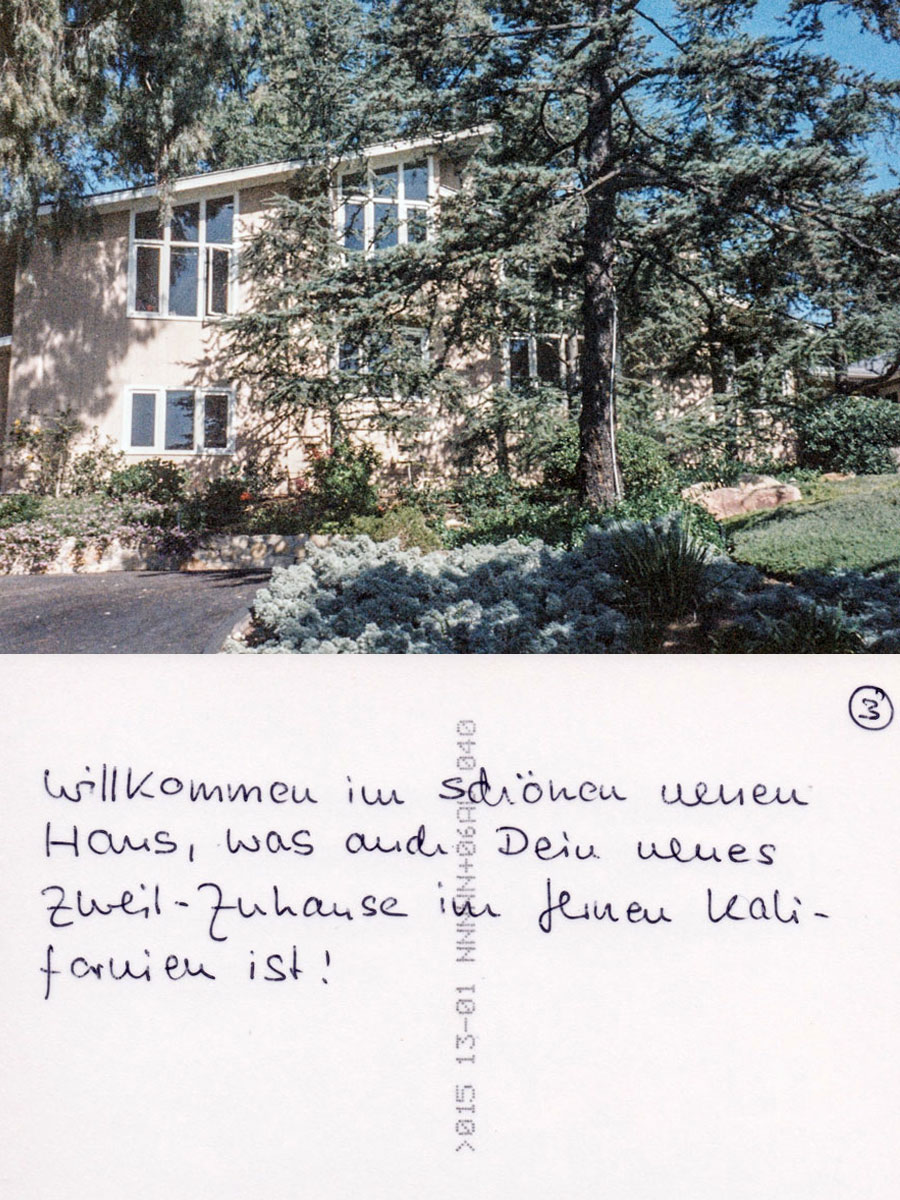
“busy Büchti”, as Christoph was affectionately called

We also visited the Pacific Ocean!
This is where this poignant picture was taken: mother and son gazing out over the endless expanse of the Pacific. I wonder whether the “seer” Godela Orff sensed that only four years later this photograph would be on the front page of a volume published in memory of her son, titled with her visionary message:
“Ultimately, we are looking up at heaven”
On New Year’s Eve 1995/1996 a thunderstorm broke over us. Was it a harbinger of the events that were to come? Thunder and lightning crashed around us, the rain poured down relentlessly. It was frightening. The real inferno was revealed the next morning: there was damage to the house, trees had fallen over, fields and flowerbeds were flooded. Christoph’s photograph shows some of the damage.
The early death of Christoph Florian Büchtemann, the son she loved so much, on 12 December 2001, in Berlin as the result of an incurable disease, was the most painful thing for his mother. But she endured this grief with her natural self-discipline and bravery. She didn’t want anyone to see how much she was suffering.
Christoph’s death also affected me profoundly. I was by his side throughout the six months and knew there was nothing that could be done.
Her life draws to a close
Godela Orff wrote, drew and – contemplated … right up until her final days …
It was the months February until April 2013. Godela Off’s final weeks had come.
She was overshadowed by fear and questions of what was to come. It almost seemed as if old wounds had burst open, were bleeding again…
She spoke about her father and their relationship, and was consumed with the question of the transition from life to death …
It was my job to agree where it was appropriate and contradict where necessary. I did what was in my power to free her from her fears and torment!
Godela Orff passed away in the early evening of 6 April 2013.
Just like with her mother, Alice Solscher, who had asked me to be by her side as she passed from this world, it was my privilege to care for my wife until the moment she drew her final breath.
The death of Christoph Florian Büchtemann and the death of Godela Orff-Büchtemann have meant that the Orff stage has become empty.
Godela Orff has found her final resting place on the cemetery in Unteralting by Grafrath, in a grave in which the parents of Carl Orff and her son, Christoph Florian Büchtemann, also lie.
Engraved on the tombstone is Godela Orff’s philosophy:
“Der Tod ist die Befreiung, die Errettung, die Erlösung.” (Death is liberation, salvation and redemption)
Sometimes in the evening, I could see a cat sitting on the stone …
Done! is what Godela Orff spontaneously cried after she completed her book “Mein Vater Carl Orff und ich”. This photograph was intended to be printed on the back cover, but the publisher objected.
So here it is now, in its right place!
Geschafft! (Done!)

